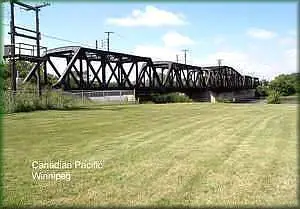 |
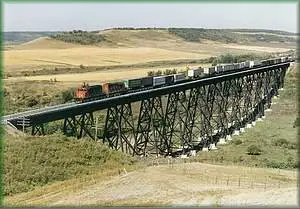 |
|
|
|
Canadian Train Bridges and Trestles
Alberta
View my Alberta section of
this page for the
most up to date pictures
of The CPR's Bonnybrook Bridge
collapse, southeast of downtown
Calgary Alberta.
There are some extremely
detailed Close up of the damage.
This pictures were provided
by Massey F. Jones
| I decided to write this page on railway bridges after
a visitor Arthur Grieve, Winnipeg, Manitoba offered
to give me a number of railway bridge pictures that he had collected.
I again hope that my visitors will be sending me their pictures to be included on this page. johnmacdonald@summerville-novascotia.com |
 |
 |
|
|
|
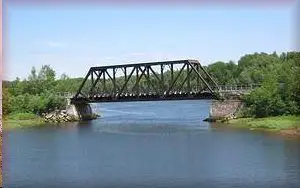 |
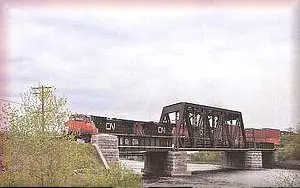 |
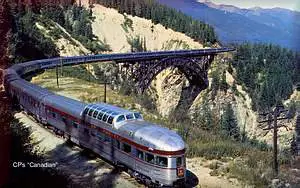 |
|
|
|
|
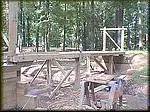 |
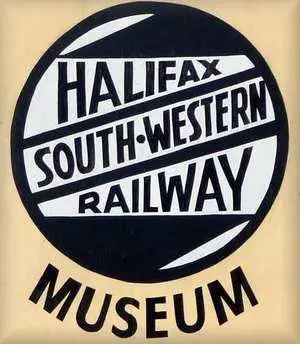 |
|
|
|
Alberta
Join me on facebook
so that you can keep up with all the changes to
this page and all the rest that make up Old Canadian
Railways
|
|
.jpg) |
Encased in a Plexiglas case at the Galt Museum
in Lethbridge, Alberta is a replica of the travelling crane, used to build the CPR High Level Bridge, also called the Lethbridge Viaduct, created in 1994 by Engineer Robert J.D Gardner, to a scale of 1:87 (HO Gauge) and donated to the Sir Alexander Galt Museum as an artifact. The orange beam in the background is part of 3 pillars depicting
the viaduct on a larger scale and it dominates dominates that portion
of the exhibition floor. Some
|
| This picture was taken and submitted by Massey F. Jones | |
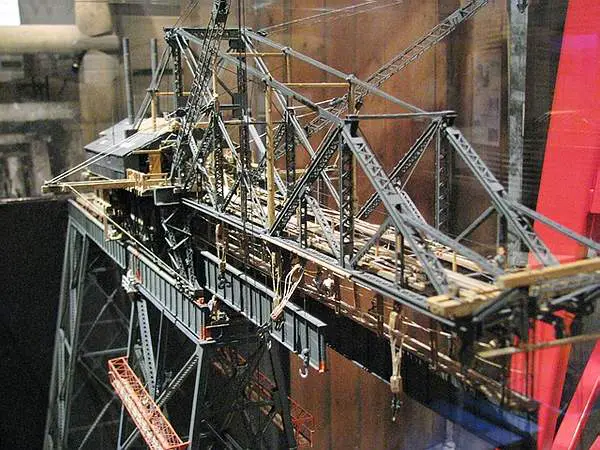 |
Inching forward, the travelling crane lifted and moved
steel rails and girders either from the valley floor or from a flat car under its belly, after it encountered the river. There was in total 18 kilometers of cable to do the lifting. In this view, the front portion has yet to be fitted with rails before the erector moved forward.. The chief engineer was John Edward Schweitzer
Another project for which Mr. Schweitzer is widely
|
| This picture was taken and submitted by Massey F. Jones | |
.jpg) |
A closer look at the exhibit reveals a riveter or
a painter on the platform and more platforms below. Missing on this model; is a smaller traveller which followed the crane as it moved forward and whose sole purpose it was to feed compressed air to the riveting crew below. It is visible in a period picture, somewhere else on this page. Over 12,000 tonnes of steel and 13,000 cubic
|
| This picture was taken and submitted by Massey F. Jones | |
.jpg) |
In this view, a girder section at the front, is about
to be join the rest of the bridge. The steam boiler and other controls were all housed the travelling crane, which was constructed on-site. The structure likely also contained the engineering office at the front, where blueprints were consulted and calculations made and the rear contained the machinery. The two hoses on back lead to a smaller unit, which,
|
| This picture was taken and submitted by Massey F. Jones | |
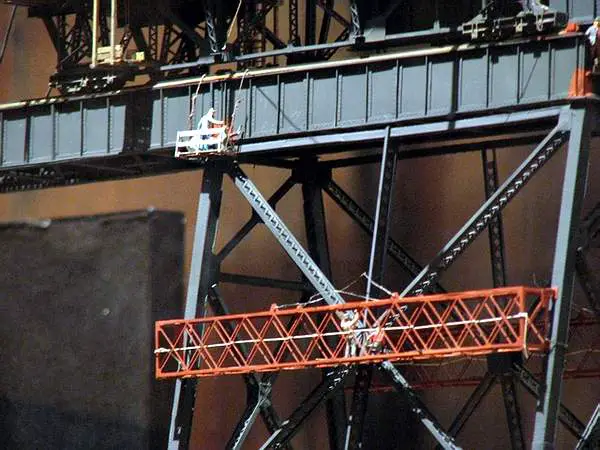 |
Notice the fine detail that went into this model.
A plaque in front of the model indicates that the scale is 1:87 (HO Scale), where 1 scale ft. on the model represents 87 ft. in real time. These are probably the painters. The bridge was painted black. |
| This picture was taken and submitted by Massey F. Jones | |
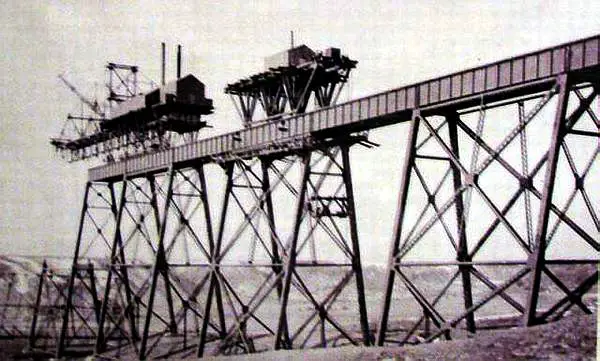 |
A 1909 photo of the travelling crane and smaller
riveter; which followed the crane as it moves along the bridge, providing compressed air. The viaduct has a slight ascent westward of 0.4%
|
| Source: Sir Alexander Galt Museum and Archives P19738126000 on wall
near the model display - MF Jones copy. |
|
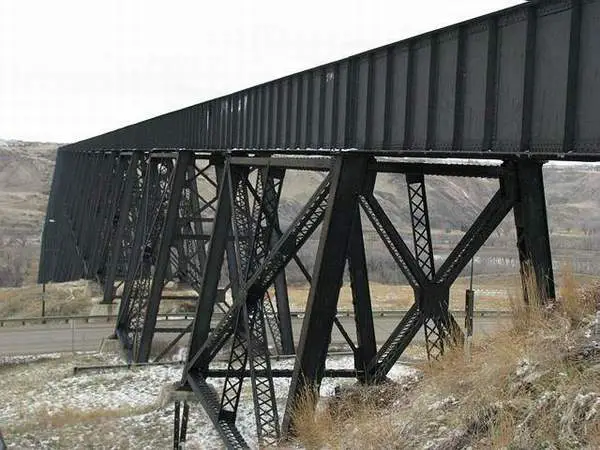 |
Looking towards city center from almost the very
end of the viaduct in West Lethbridge, we get a good idea of some of the construction of one of the towers, which after the road, drop sharply into the Oldman river, before rising on the other side. The road under the bridge is Crowsnest Trail, which a few metres to the left down the road, will hook up to Alberta Highway #3 and eventually lead into the southern part of BC. |
| This picture was taken and submitted by Massey F. Jones | |
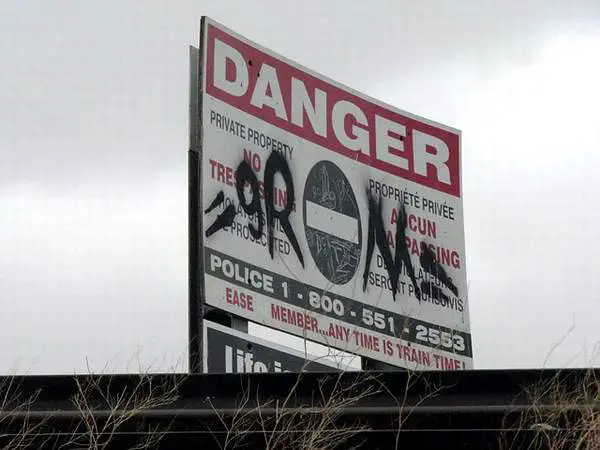 |
By the looks of this sign, a lot of trespassers have been
on the tracks. This view looks slightly below the track at West Lethbridge, almost to the end of the viaduct. The largest rail bridge in Canada is an adventure magnet for BASE jumpers who like to hike to the the middle of the 1.6 km ( 5,327 ft.) and then parachute off the bridge . In 2013, there was a $287 fine by CPR police for doing so. Whereas old style trestles had small platforms to hold
|
| This picture was taken and submitted by Massey F. Jones | |
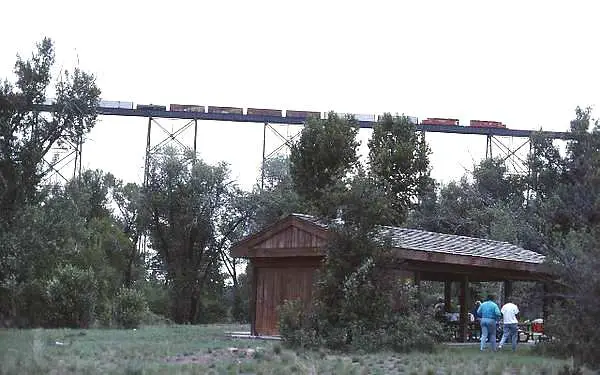 |
CP Freight High Level Bridge Lethbridge AB in August 1992, viewed
from Indian Battle Park
The park name commemorates the last battle between the Cree and the Blackfoot, fought here in 1870. Much of the battle took place in Indian Battle Coulee on the west side of the river (to the left), while the retreat across the river ended in a last stand close to the Coal Banks Interpretive Centre (near this picture site). A formal peace treaty between the two nations was signed the following year. |
| This picture was taken and submitted by Massey F. Jones | |
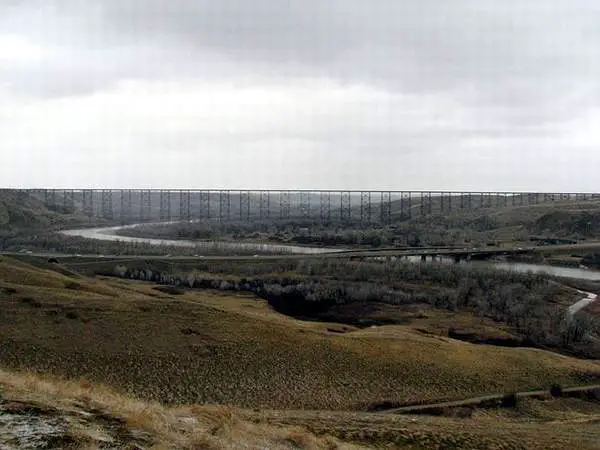 |
Almost the entire viaduct, viewed from one of
the parking lots behind The University of Lethbridge, on a very blustery cold April 11th, 2014. In the middle, the road is Whoop-Up Drive.
|
| This picture was taken and submitted by Massey F. Jones | |
.jpg) |
A composite of 2 photos this view shows the entire bridge almost
from end-to-end, looking west from the end of
1 Ave South. The road eventually joins Crowsnest Trail and leads into Southern BC. To the left is a large parking lot. The bridge is 1.6 km log and a bit over 100 m high, with 33 towers. |
| Massey F. Jones collection |
| The Lethbridge high level bridge with a train that had two engines in the front then cars the full length of the bridge, a robot and another set of cars the full length of the bridge, another robot, another set of cars the full length of the bridge again and a robot at the tail end pushing. Based on the length of the bridge which is believed to be very close to a mile, this train was somewhere around 15,000 feet long or 3 miles! |
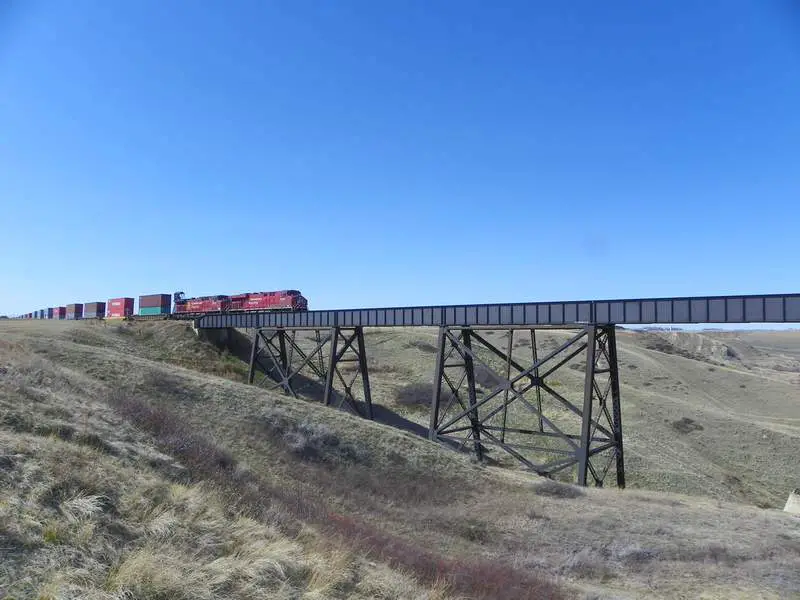 |
|
|
| This picture was taken by Peter J Wilson |
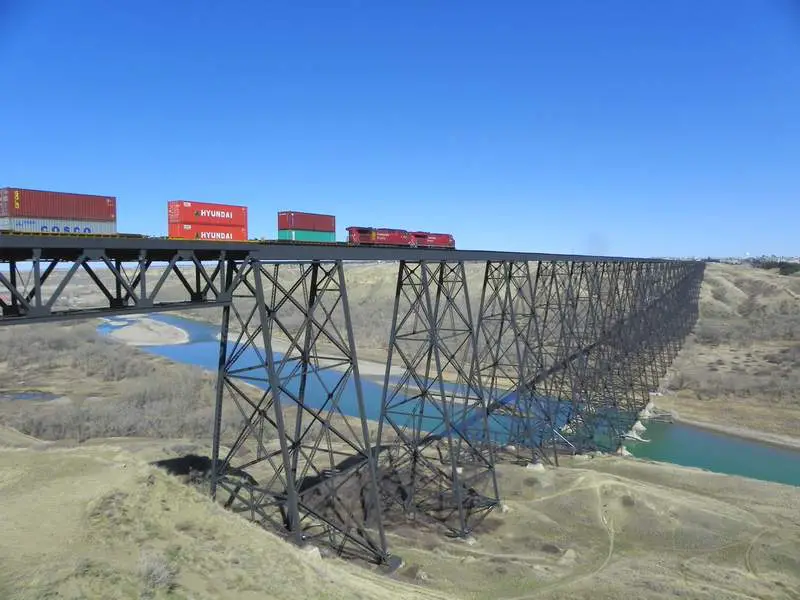 |
|
|
| This picture was taken by Peter J Wilson |
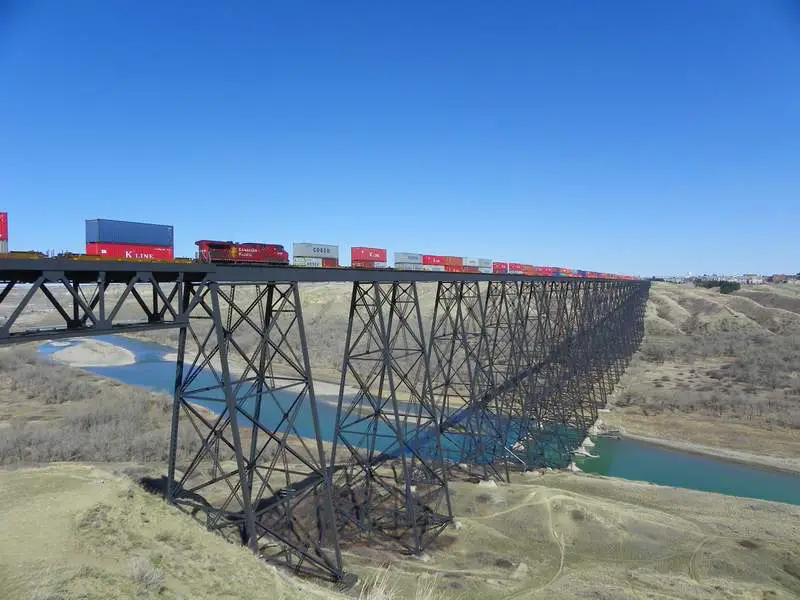 |
|
|
| This picture was taken by Peter J Wilson |
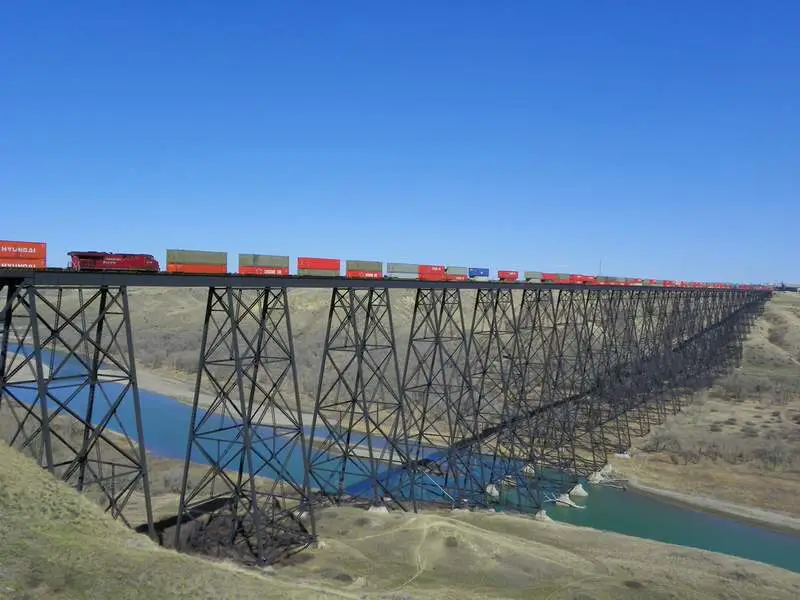 |
|
|
| This picture was taken by Peter J Wilson |
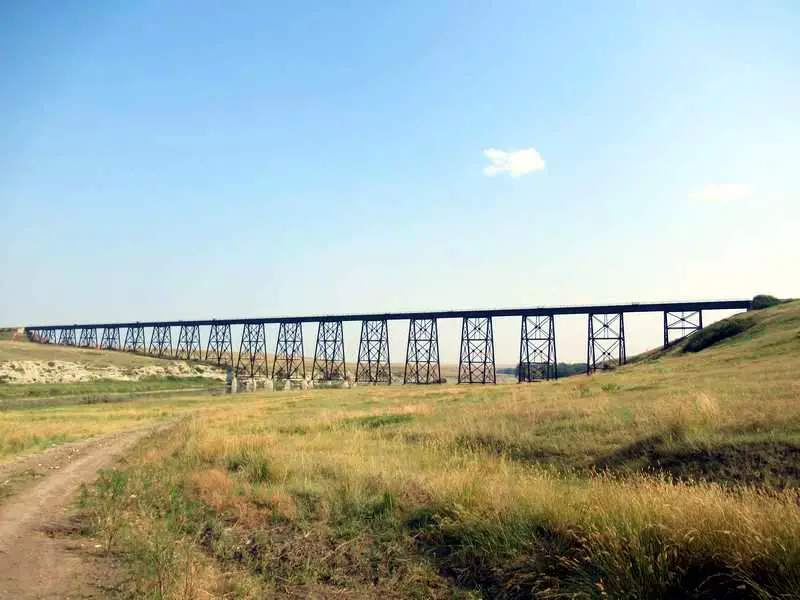 |
|
|
| This picture was submitted by Dale Redekopp St. Albert, AB |
|
|
|
|
| This picture was taken and submitted by Massey F. Jones |
| Looking similar and constructed about the same time and by the same
company as the High Level Bridge in
Lethbridge AB (named for William Lethbridge, 1825-1901), the CPR Monarch Bridge is often overlooked by railfans visiting the area. Yet, it is only located 23 km (14 mi) northwest of its big brother on Highway 3, about half-way between Lethbridge and Fort Macleod. It has the same structure but not as long or high. It greatly shortened the distance and lessened the grades when it
was built in 1908-1909 to replace a series of short bridges. The steel
for this bridge was brought by rail in pieces from the Dominion Bridge
Company of Walkerville Ontario and assembled with the famous �erector�
which had constructed the big one. The Monarch Bridge stands
The GPS location of the bridge is approximately 49º48�6�N 113º12�09.4W.
The best vantage point is aroud a curve
|
 |
| Submitted by Massey F. Jones |
| MONARCH, listed on an abbreviated version of Employee Timetable
No. 86, May 29, 1983.
Newer employee timetables will show KIPP at Mileage 11.0 CP Crowsnest Sub, which is where the Lethbridge CPR yard has now moved. See my Station page http://yourrailwaypictures.com/TrainStations/indexCentral.html for more details. |
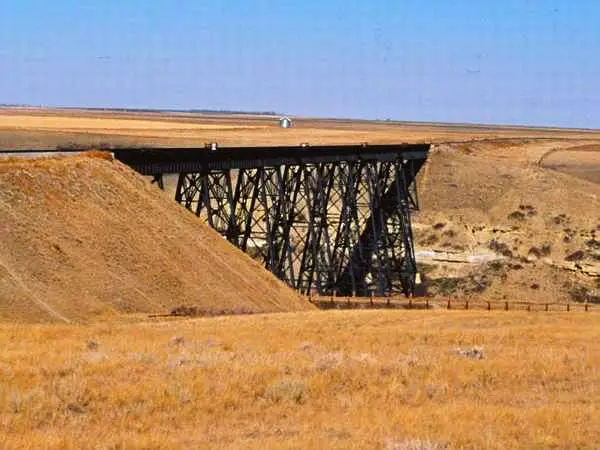 |
| Photo: Late Lorne Unwin � Massey F. Jones collection |
| A 1980s view of the trestle, just north of Carmangay, Alberta, located
62 kilometres (39 mi) north of Lethbridge
and 150 kilometres (93 mi) south of Calgary, along the CPR Alderside Sub. Timetable 23, shown on my Western statios page at http://yourrailwaypictures.com/ TrainBridges/indexAlberta.html shows the location of Carmangay well, in relation to Calgary and Lethbridge. The trestle is used infrequently between the two cities for freight service only. The name Carmangay originates from C.W Carman and his wife Gertrude Gay, who operated a wheat farm on what is now the trestle site. It is unknown who built the bridge but Dominion Bridge erected similar structures on the Crowsnest Sub, more to the south, at Monarch and Lethbridge (both shown on this page), about the same time period. Very easy of access, the trestle was built by the CPR in 1911 as a wooden bridge and replaced by the by a steel structure in 1928. View a period photo of the trestle being changed from wood to steel at http://www.galtmuseum.com/permalinkA/5005/ Published data puts it at 150m long (just short of 500 ft.) and 44m high (just short of 150 ft.). In its time, the Carmangay trestle was the longest for its height. Excellent close-ups photos of the trestle from various angles at http://www.bigdoer.com/6720/exploring-history/bridge-hunting-carmangay-alberta/ |
|
|
| The Beaver River Trestle near Grand Centre in Northeastern Alberta,
likely photographed from an RCAF plane
from Cold Lake, because the trestle is on the flight path. The trestle is a combination timber, as well as truss and girder built in 1931 and stands 60 metres high spanning 450 metres across the valley. When CN abandoned rail service in 1999, ten municipalities and a
volunteer organization worked together to
It took two years after ownership was secured in 2001, in order to
have the corridor in good enough shape for
The trestle was damaged in June 2012 after a lit car was pushed off
the north end embankment, became
|
| Massey F. Jones collection |
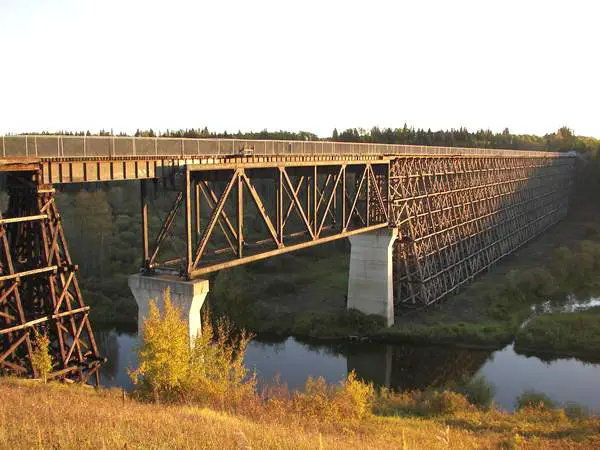 |
| Beaver River Alberta
This trestle bridge crosses the Beaver River going into Cold Lake, Alberta. The train service has been discontinued but this bridge is now part of a cross country trail and is spectacular |
| This picture was submitted by Svala Dunn |
|
|
|
|
Hard to believe that this humble little bridge over the
Elbow River, almost in front of Fort Calgary at 9 Avenue and 8 Street SE, is directly responsible for Calgary being the city that it is today. Between 1881 and 1885, as the CPR was pushing west,
The train on the bridge, is most probably what is known locally as
"The Keith Turn"; heading back to Alyth classification Yard, from the CPR
overflow yard (Keith)
Notice the two different paint schemes on the diesels |
| This picture was taken and submitted by Massey F. Jones | |
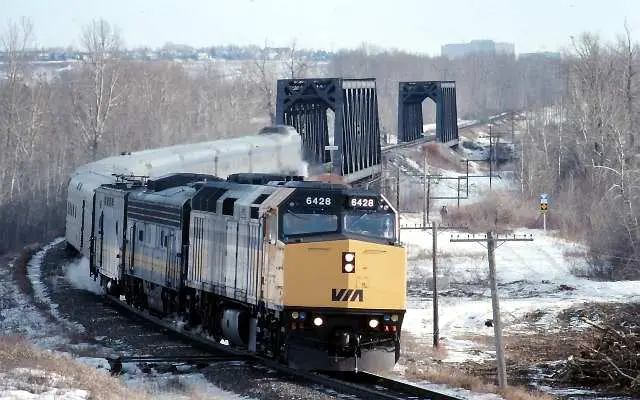 |
VIA6428 Crossing the Twin Bridges, Bowness Calgary AB |
| This picture was taken and submitted by Massey F. Jones | |
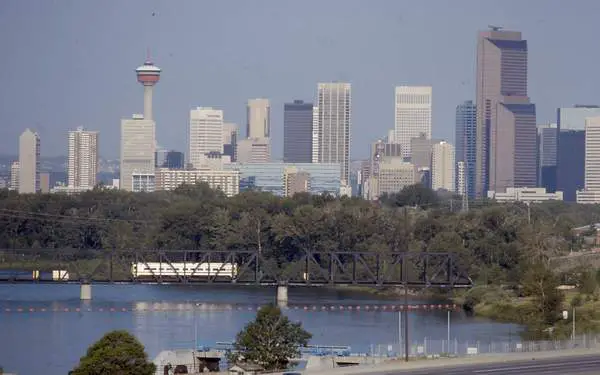 |
VIA Dayliner crossing the Bow River in Calgary July 20, 1985, bound
for Edmonton on the CP Red Deer Sub.
Service was discontinued shortly thereafter
|
| This picture was taken and submitted by Massey F. Jones | |
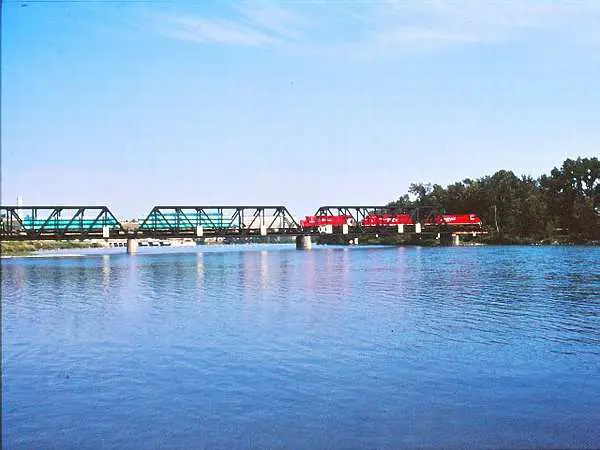 |
The CPR Bridge spanning the Bow River in Calgary
between Alyth Yard (12th STREET EAST), Mileage 0.0 and BENGAL, Mileage 1.1 on the Red Deer Subdivision. The train is inbound for Alyth and the view looks east
|
| This picture was taken and submitted by Massey F. Jones | |
_track_to_Ogden_(right).jpg) |
View from Ogden Road in Calgary looking north. In the background,
the CN bridge leads to Sarcee Yard (right).
Not used much anymore. In the foreground, theCP mainline (Brooks Sub). A half-mile to the right is Ogden (Alstrom) shops and a few yards to the left is the south end of Alyth Yard.The locos are going into a siding into Ogden yard. |
| This picture was taken and submitted by Massey F. Jones | |
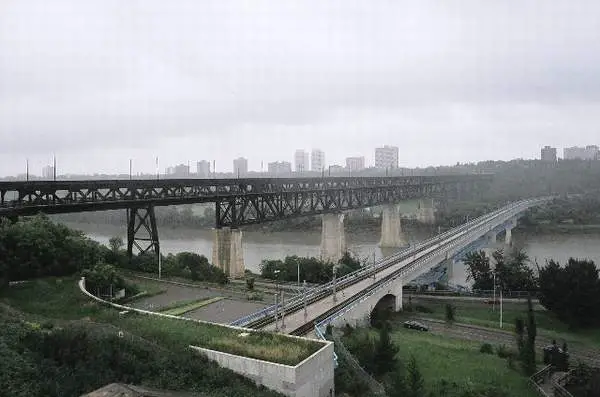 |
Edmonton
High Level Bridge
The bridge opened in 1913, linking Edmonton to
On the opposite side from this view is, a "waterfall" higher than Niagara Falls, which operates during holiday weekends. In the foreground is the Edmonton Transit LRT,
|
| This picture was taken and submitted by Massey F. Jones | |
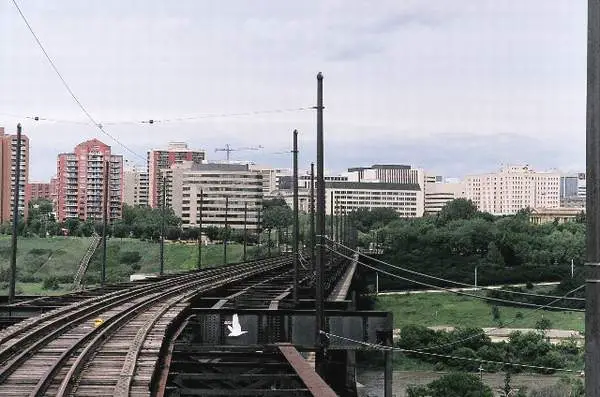 |
Edmonton High Level Bridge
During summer, the Edmonton Radial Railway Society
|
| This picture was taken and submitted by Massey F. Jones | |
|
|
Edmonton's High Level Bridge, taken from the 21st floor of a downtown
hotel, early October 2011.
This is the side, out of which flows The Great Divide Waterfall http://www.edmonton.ca/attractions_recreation No trucks are allowed on the bridge, which is reserved for cars, transit buses and pedestrians. The left centre of the photo(orange portion), shows how cars come off the bridge. |
| This picture was taken and submitted by Massey F. Jones | |
|
|
From May (Victoria Day) to October (Canadian Thanksgiving) , the
Edmonton Radial Railway Society operates one or 2 streetcars (depending
upon the season) over the High Level Bridge, using former CPR trackage,
on the top deck.
Compared to the bridge size, little Osaka #247 tramway is insignificant. View the tramway history at: http://www.edmonton-radial-railway.ab.ca/highlevelbridge |
| This picture was taken and submitted by Massey F. Jones | |
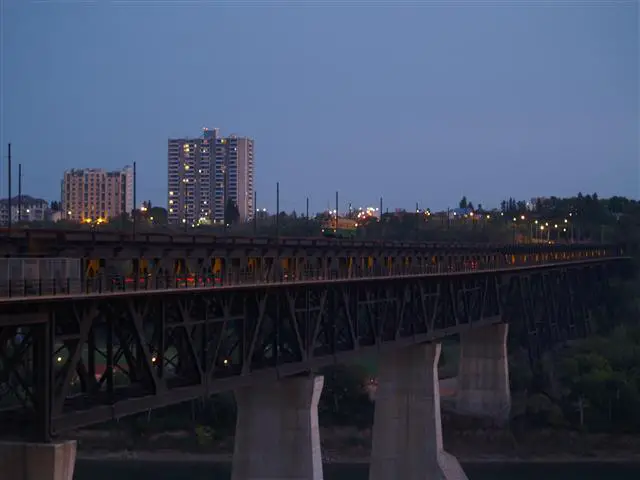 |
Another series of the Edmonton's High Level Bridge |
| This picture was taken and submitted by Bruce Raynor | |
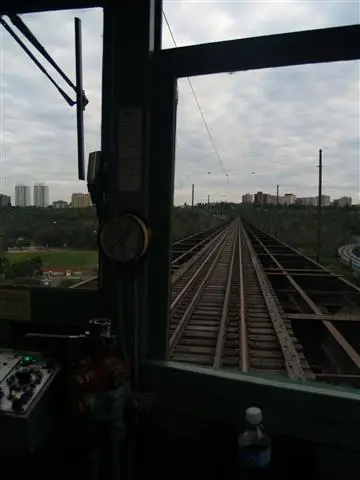 |
Edmonton's High Level Bridge |
| This picture was taken and submitted by Bruce Raynor | |
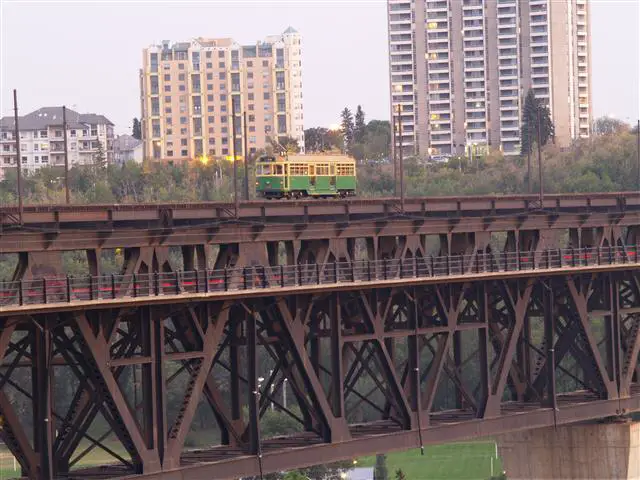 |
Edmonton's High Level Bridge
This an Edmonton Radial Railway's alternate tramway,
|
| This picture was taken and submitted by Bruce Raynor | |
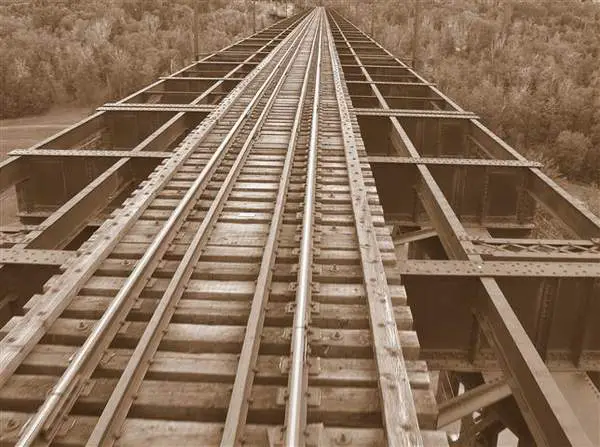 |
Edmonton's High Level Bridge
According to ERRS history, the bridge deck
|
| This picture was taken and submitted by Bruce Raynor | |
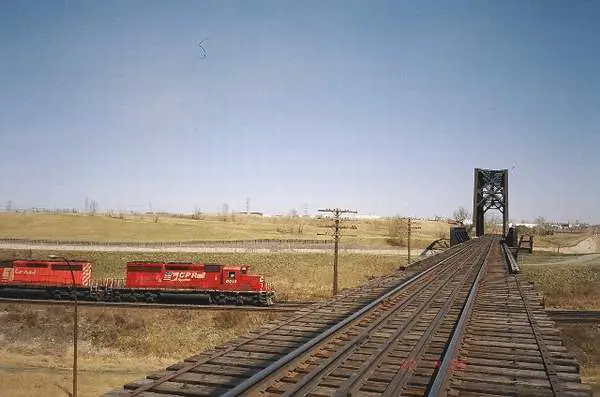 |
The CN bridge over Ogden Road in Calgary. The track
is a spur off Sarcee Yard (about a kilometre away in the background). The CPR Brooks Sub runs under the bridge and the south end of Alyth classification yard is nearby. For those without transportation, Calgary Transit Route #24 runs for a great portion, alongside Alyth Yard and the Brooks Sub. |
| This picture was taken and submitted by Massey F. Jones | |
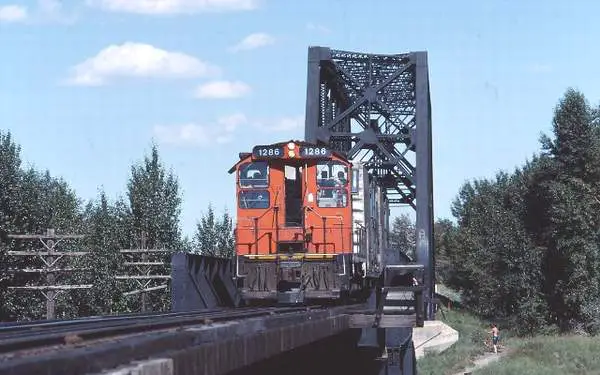 |
CN 1286 runs on a spur out of Sarcee Yard (in the
background to a local industry in the mid-nineties.) They aren't used much anymore. |
| This picture was taken and submitted by Massey F. Jones |
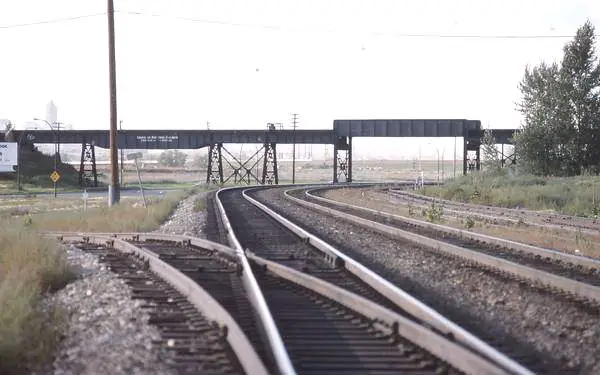 |
The CN bridge over Ogden Road and CPR Brooks sub, in southeast Calgary
Sep 88. Calgary Transit bus Route 24 follows most of Alyth classification
yard and a goodportion
of the Brooks Sub. |
| This picture was taken and submitted by Massey F. Jones | |
 |
This is a very rare photo of the Alberta Central Railway pillars
taken in October 1989. Only one pillar is left today; along Taylor
Drive, just north of 22nd Street in Red Deer AB, where it is one of the
historic landmarks
The west pillar (to the left in the photo) was removed in 1992 for the construction of Taylor Drive on the former CPR right of way (the tracks shown here). The pillars had supported the ACR bridge over the CPR in 1910-11 but (the bridge) was likely never used as the CPR took over the ACR and had no interest in the east section. The date when the actual bridge was removed cannot be determined. More details on the pillar can be found at http://www.forthjunction.com/dawe-acr-pillar.htm The Forth Junction Heritage Society www.forthjunction.com also has a few links on the early area railways, such as the ACR the Canadian Northern Western Railway and the Calgary & Edmonton Railway (C&E) including stations, |
| This picture was taken and submitted by Massey F. Jones | |
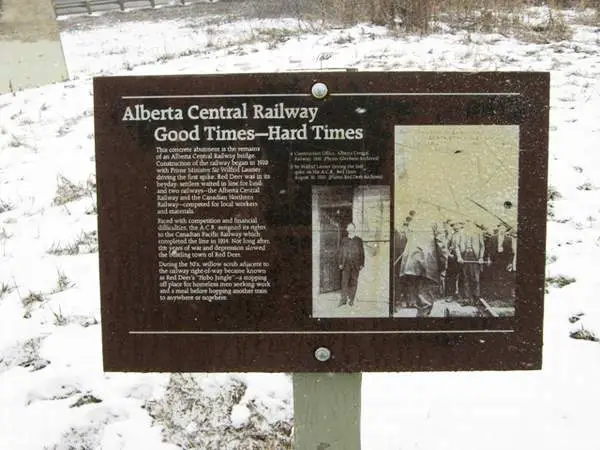 |
Historic railway site sign at the site of the
Alberta Central Railway bridge |
| This picture was submitted by Massey F. Jones and was taken by his
wife on April 17th, 2010 |
|
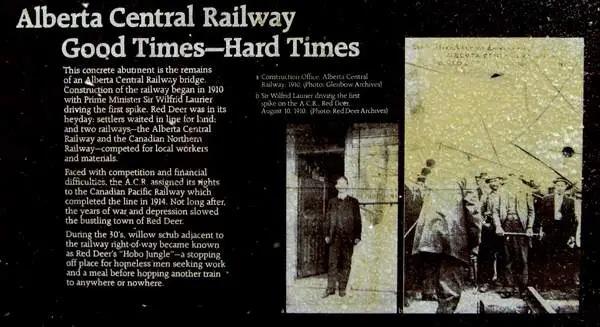 |
|
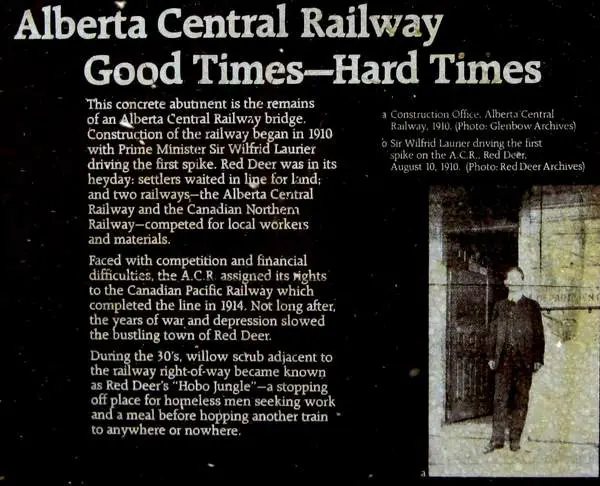 |
|
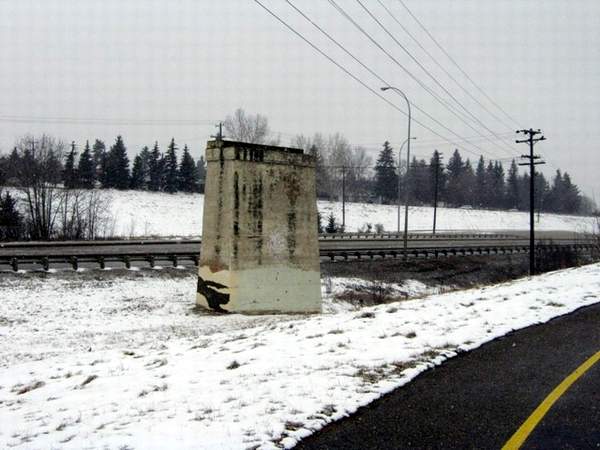 |
The pillar as it appears today. In the background is Taylor Drive, constructed where the tracks once stood. |
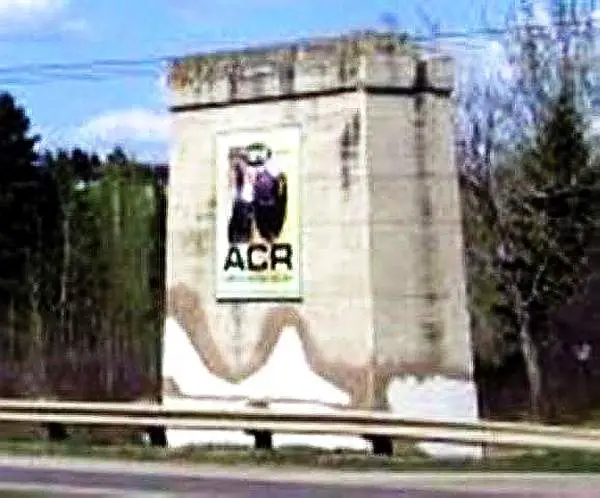 |
The opposite side of the pillar shown above |
| This picture was submitted by Massey F. Jones | |
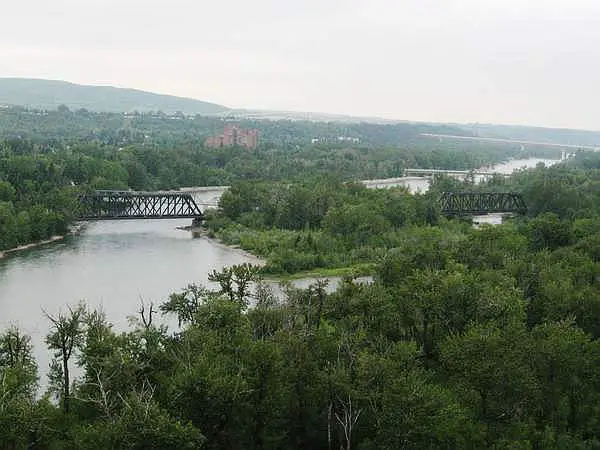 |
The twin bridges in the the Bowness area of northwest
Calgary, photographed from Bowmont Park, adjacent to the Silver Springs community (easily reached by Transit and driving). The view looks roughly southwest. The photo was taken on the rainy day in August 2010, while awaiting
an inbound run of the CPR 2816 through the
A bonus is that every train going through the twin bridges
Freight trains run through there, either eastbound or
Laggan Sub is the original Canadian Pacific Railway
|
| This picture was taken and submitted by Massey F. Jones | |
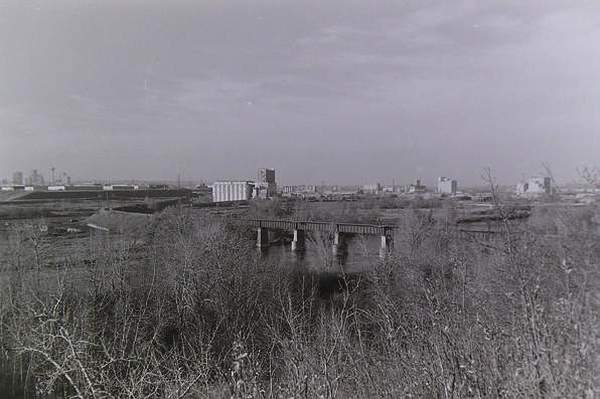 |
CNR bridge over the Bow River taken from the Ogden-Millican district |
| This series of pictures were taken and submitted by Larry Buchan
, Calgary, Alberta
Larry worked as a locomotive engineer on the CPR out of Calgary. |
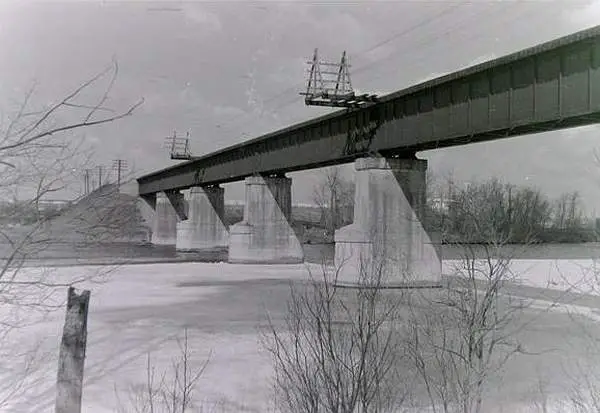 |
CNR Bow River Bridge from underneath looking north |
| This picture was taken and submitted by Larry Buchan | |
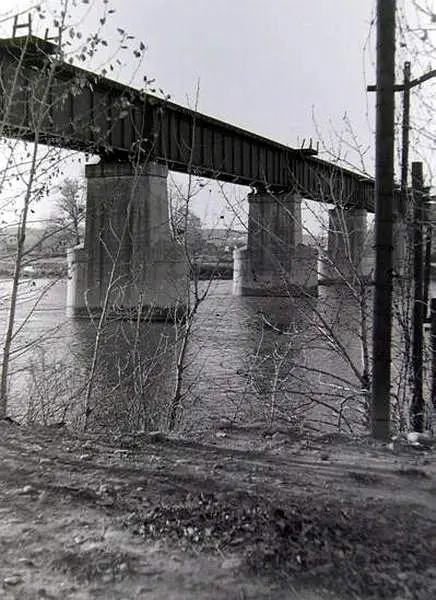 |
CNR Bow River Bridge from underneath looking south |
| This picture was taken and submitted by Larry Buchan | |
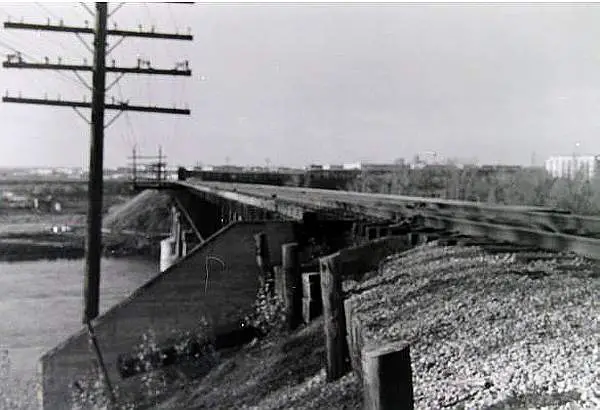 |
CNR bridge over Bow River top view looking east |
| This picture was taken and submitted by Larry Buchan | |
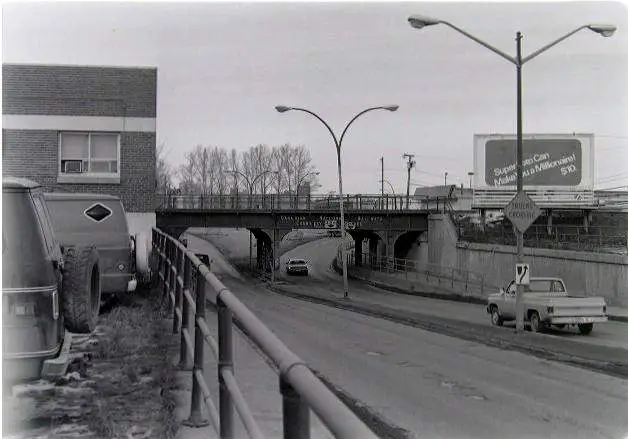 |
CNR bridge over MacLeod Trail near Calgary
Stampede Grounds |
| This picture was taken and submitted by Larry Buchan | |
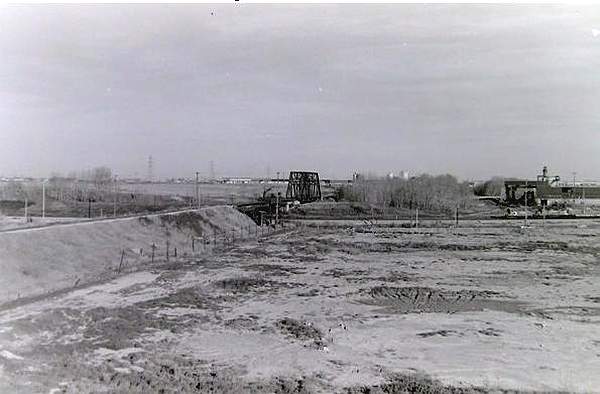 |
CNR bridge over Ogden Road |
| This picture was taken and submitted by Larry Buchan | |
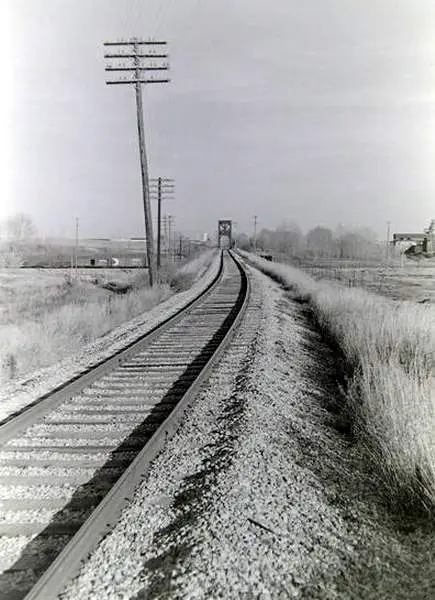 |
CNR bridge over Ogden Road taken from Bow River Bridge |
| This picture was taken and submitted by Larry Buchan | |
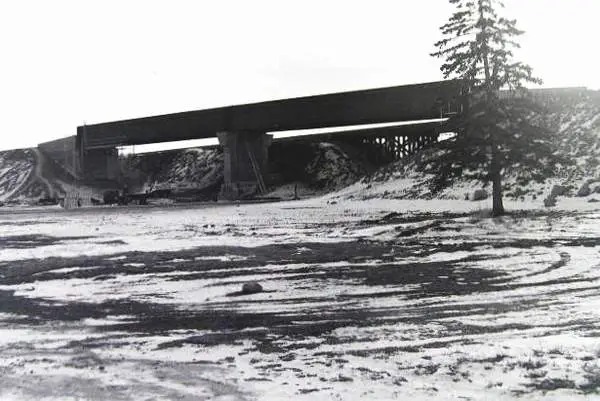 |
CNR steel bridge deck to replace wooden trestle over Deerfoot Trail |
| This picture was taken and submitted by Larry Buchan | |
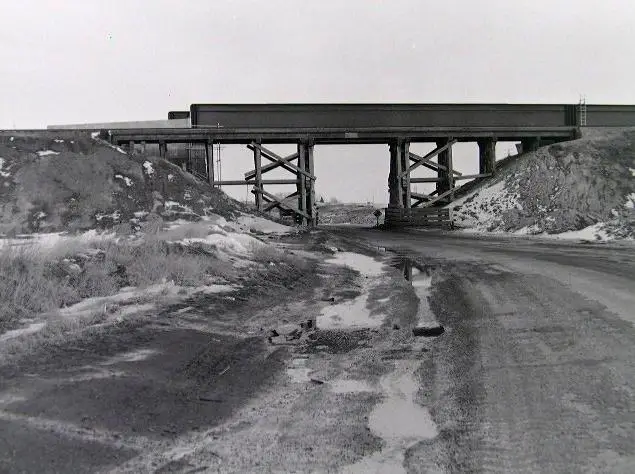 |
CNR wooden trestle being replaced by steel bridge |
| This picture was taken and submitted by Larry Buchan | |
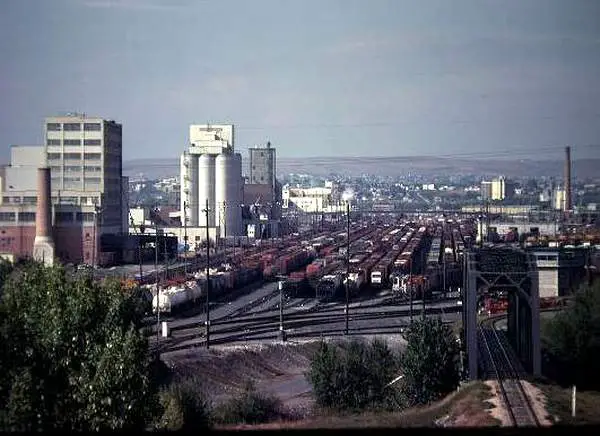 |
A good view of the CNR (GTP) high line that served
as a transfer lead with the CPR interchange tracks to the right of the CPR control tower visible on the right. It also serviced the Gulf Oil Refinery, and at one time ran to the Grand Trunk Pacific Terminal on the west side of the Elbow River where Fort Calgary was located. |
| This picture was taken and submitted by Larry Buchan | |
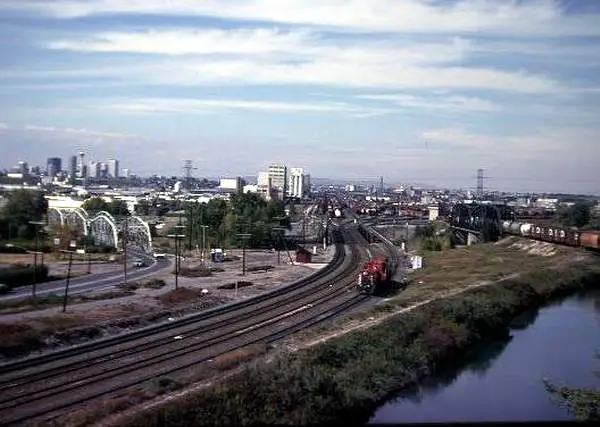 |
CPR and CNR ex Grand Trunk Pacific bridges over
Bow River a transfer from the CNR to the CPR interchange was taking place at this time, Calgary's skyline has changed a lot since this slide was taken. |
| This picture was taken and submitted by Larry Buchan | |
.jpg) |
Shown from a slightly different angle, a little more east
of Larry Buchan's 1971 photo above, is the CN high line to the right and CPR mainline (Brooks Sub at about Milepost 170 or so) to the left. The view looks northwest from 50 Ave SE near Ogden Road in the summer of 2012 and we note the Bonnybrook Bridge location. We can use the Calgary Tower to the extreme left as
The strip in the centre of Massey's picture is a part
|
| This picture was taken and submitted by Massey F. Jones | |
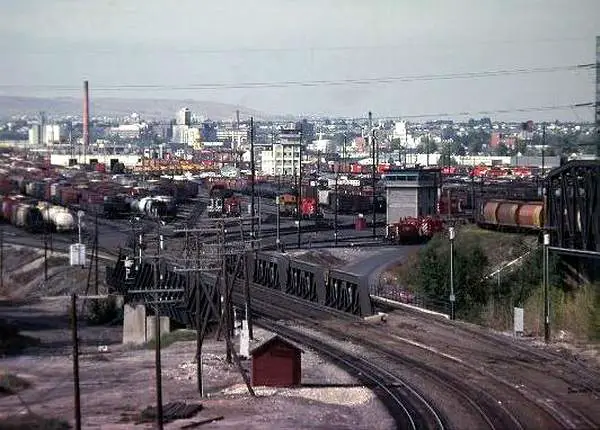 |
CPR Bonnybrook Bridge over Bow River there
are three tracks visible P-1 the mainline, P-2 lead, and Old Ogden lead, not visible is a steel bridge attached in 1971 when the Alyth yard was rebuilt and it ran to the CPR's Ogden Shops and other industrial leads. |
| This picture was taken and submitted by Larry Buchan | |
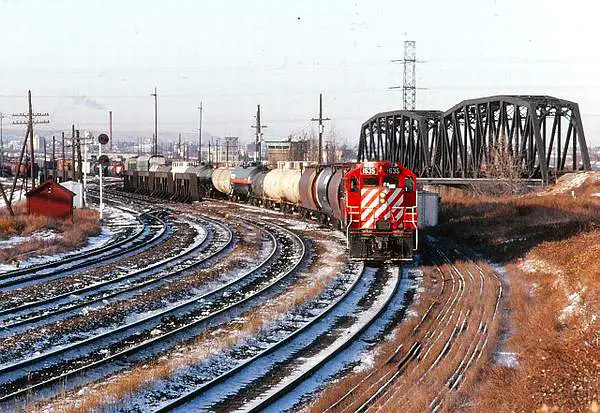 |
GP9u 1635, in December 1987, switching on the 1971 Bonnybrook Bridge,
adjacent to its partner, the 1912
bridge which collapsed during the 2013 flood. Part of the old bridge is hidden by the trackside shack to the left. To the right is the CN interchange bridge, featured on
The large chimney about the middle is the Alyth Diesel
This view looks just about straight north from a point
|
| This picture was taken and submitted by Massey F. Jones |
June 27th 2013, a
portion of the 1912 CPR Bonnybrook Bridge southeast of downtown
Calgary collapsed with 6 tank cars on it
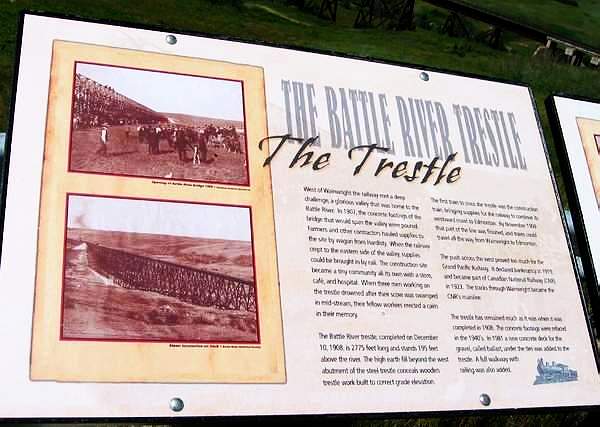
Click on this image for a larger view in a new window |
The Battle River Trestle
The Railway Trestle, built in 1908, was the longest freestanding trestle in Canada |
| This picture was submitted by Dale Redekopp St. Albert, AB | |
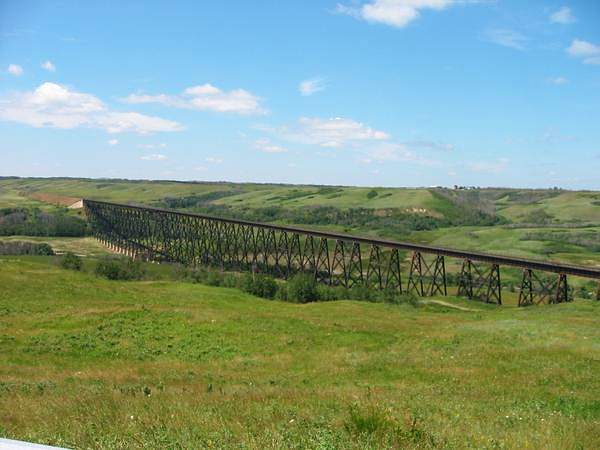 |
The Battle River Trestle |
| This picture was submitted by Dale Redekopp St. Albert, AB | |
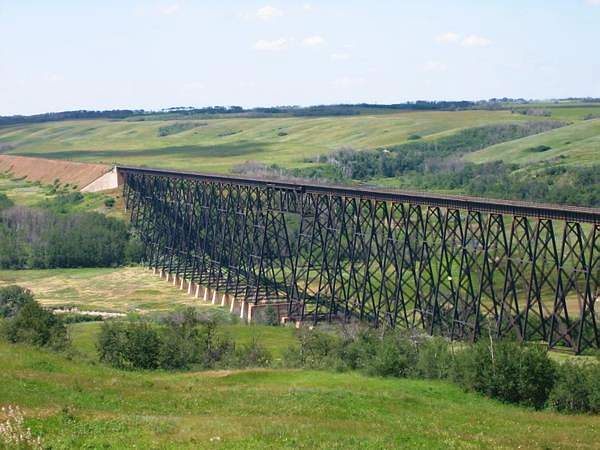 |
The Battle River Trestle |
| This picture was submitted by Dale Redekopp St. Albert, AB |
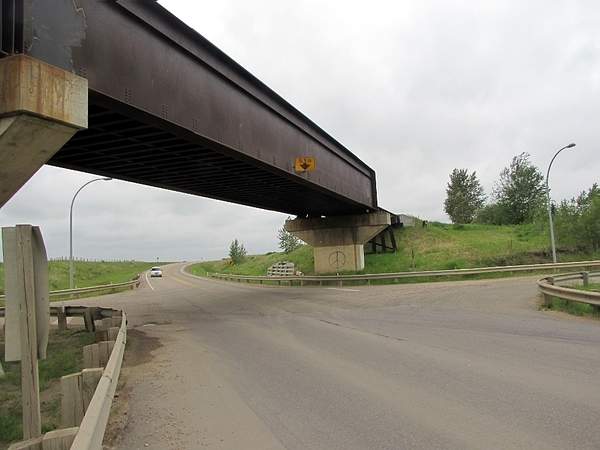 |
CNR underpass and trestle at Villeneuve Road.
The bridge is northwest of St. Albert over Highway 633 on the CNR line that runs through St. Albert. Built around 1908. It is also believed that the highway overpass section of this structor was rebuilt in the early 1980's. |
| This picture was submitted by Dale Redekopp St. Albert, AB | |
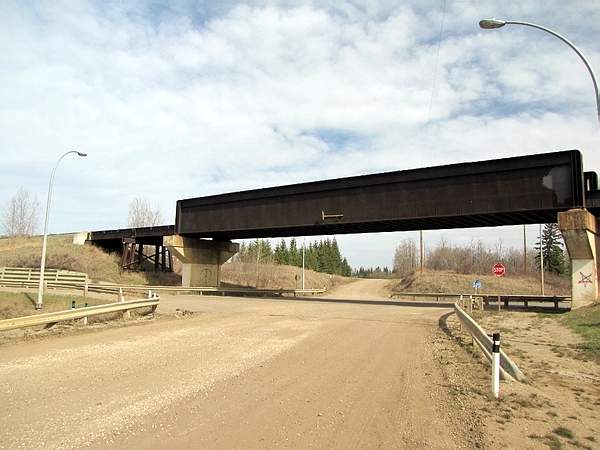 |
CNR underpass and trestle at Villeneuve Road. |
| This picture was submitted by Dale Redekopp St. Albert, AB | |
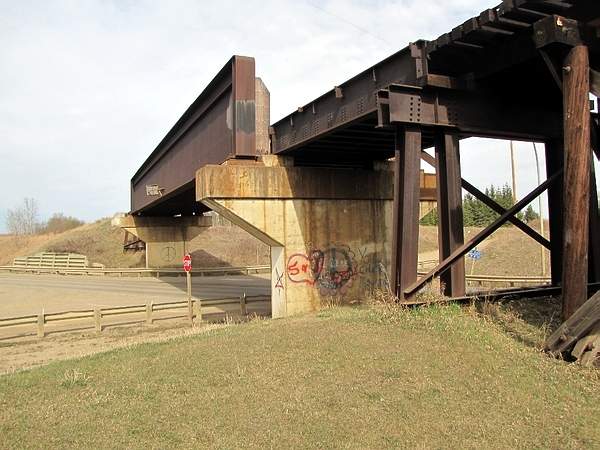 |
CNR underpass and trestle at Villeneuve Road. |
| This picture was submitted by Dale Redekopp St. Albert, AB | |
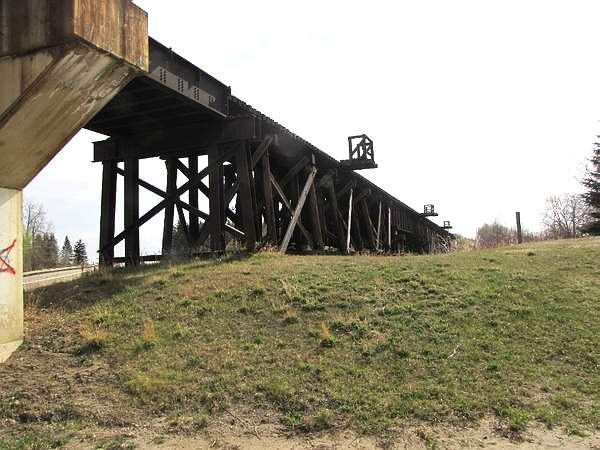 |
CNR underpass and trestle at Villeneuve Road. |
| This picture was submitted by Dale Redekopp St. Albert, AB | |
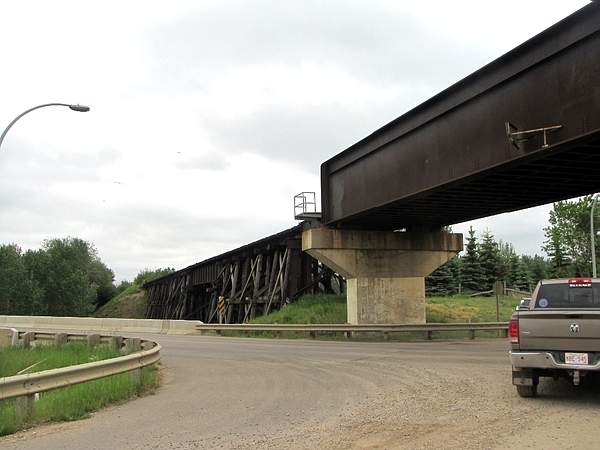 |
CNR underpass and trestle at Villeneuve Road. |
| This picture was submitted by Dale Redekopp St. Albert, AB | |
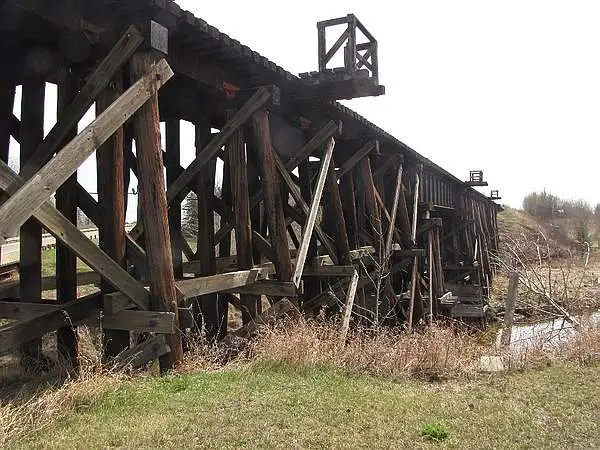 |
CNR underpass and trestle at Villeneuve Road. |
| This picture was submitted by Dale Redekopp St. Albert, AB | |
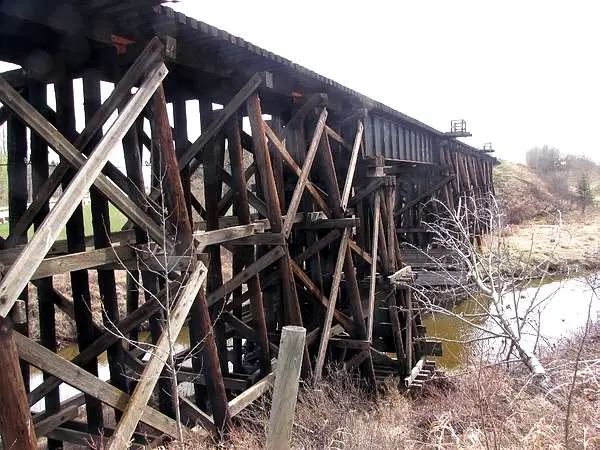 |
CNR underpass and trestle at Villeneuve Road. |
| This picture was submitted by Dale Redekopp St. Albert, AB | |
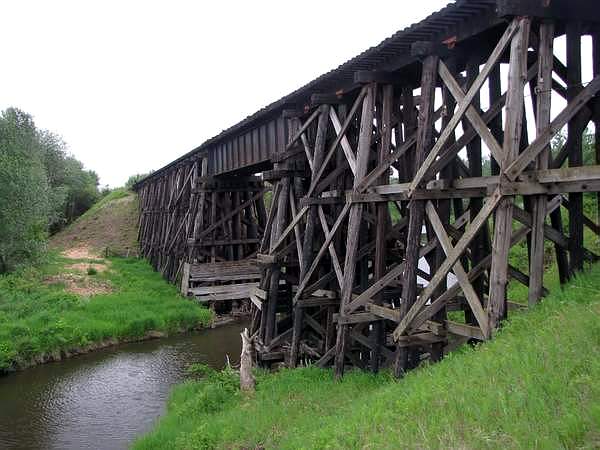 |
CNR underpass and trestle at Villeneuve Road. |
| This picture was submitted by Dale Redekopp St. Albert, AB | |
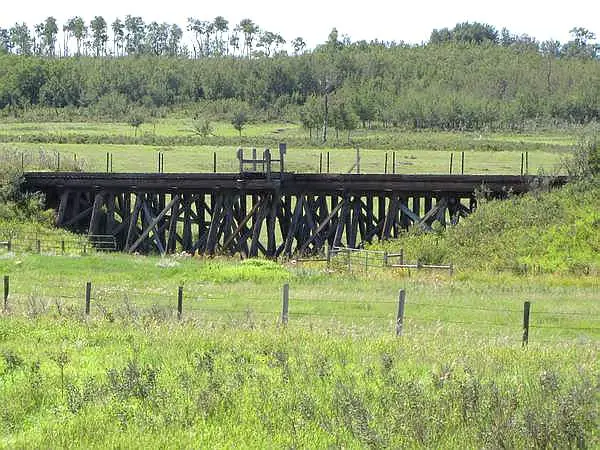 |
CPR wooden train trestle east of the town of
Meeting Creek AB |
| This picture was submitted by Dale Redekopp St. Albert, AB |
 |
CPR bridge over Elbow River taken from a
yard locomotive in 1982 |
| This picture was taken and submitted by Larry Buchan | |
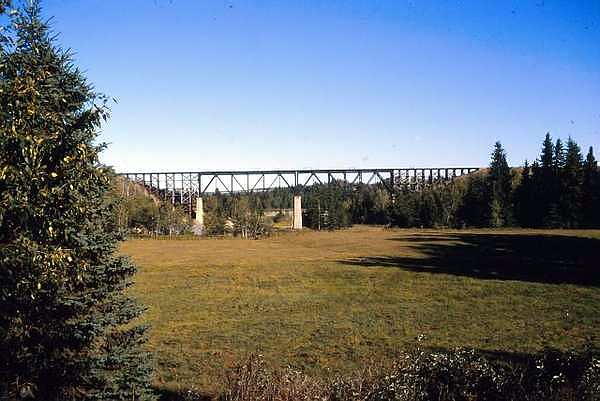 |
The Burbank Bridge, north of Red Deer near Blackfalds Alberta on
September 2nd, 1984..
It was originally a wood trestle bridge built over the
Source: http://www.forthjunction.com/railway-bridges
The photo on their page doesn�t show the concrete
|
| This picture was taken and submitted by Massey F. Jones | |
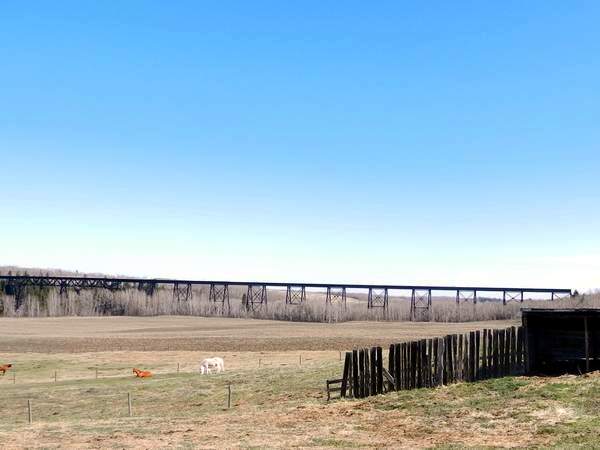 |
The Mintlaw
Trestle is located a couple of miles
southwest of Red Deer, Alberta. It was built about 1911 for the Alberta Central Railway and finished in 1912 by the Canadian Pacific Railway. It is 2112 feet long and 110 feet high. Last train in 1981. There is a group in Red Deer who are trying to raise money to convert it into a foot bridge to become part of a hiking trail. |
| This picture was submitted by Dale Redekopp St. Albert, AB | |
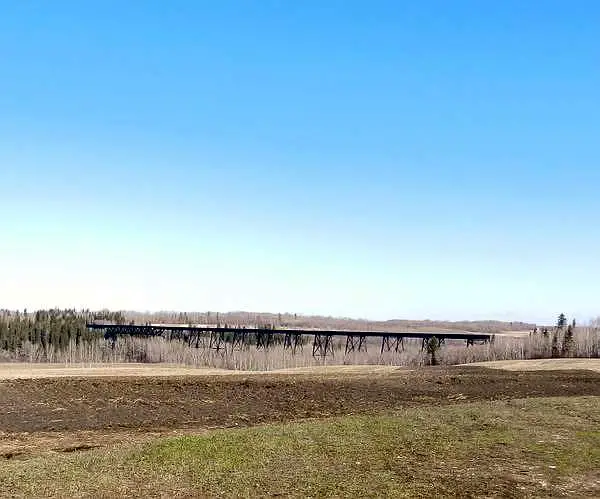 |
The Mintlaw Trestle |
| This picture was submitted by Dale Redekopp St. Albert, AB | |
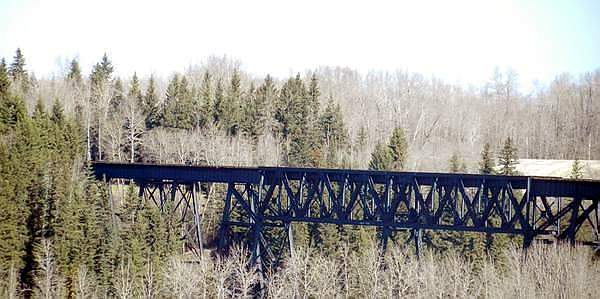 |
The Mintlaw Trestle |
| This picture was submitted by Dale Redekopp St. Albert, AB | |
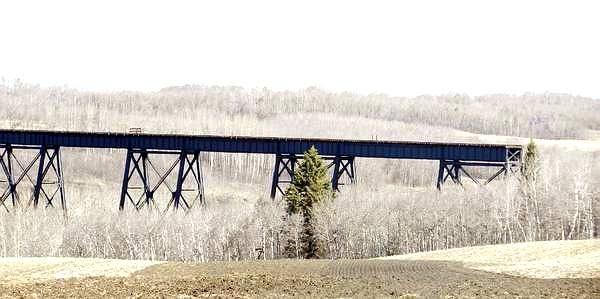 |
The Mintlaw Trestle |
| This picture was submitted by Dale Redekopp St. Albert, AB | |
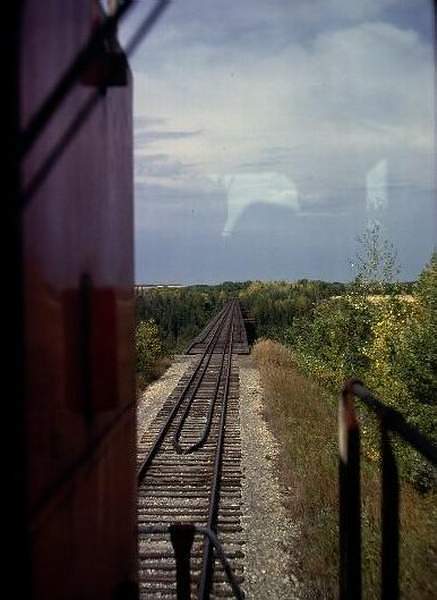 |
This series of pictures were taken in October 1979
when Larry was training as an engineer on the Red Deer Subdivision north of Calgary, this was his only trip he took on the Alberta Central Railway Subdivision and views are of a spectacular railway bridge over the Red Deer River Approaching the bridge |
| This picture was taken and submitted by Larry Buchan | |
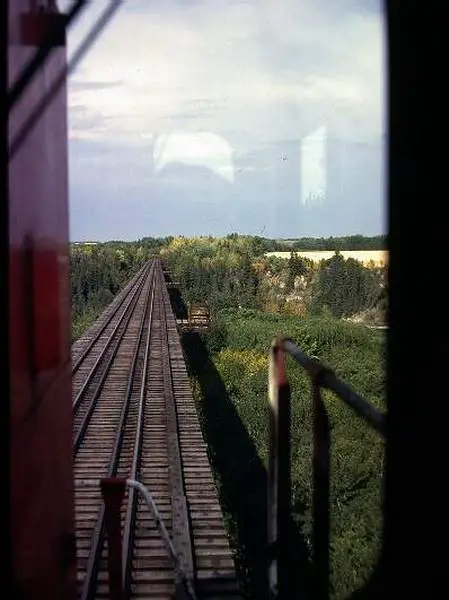 |
On the bridge, the speed I believe was 10 mph at that time |
| This picture was taken and submitted by Larry Buchan | |
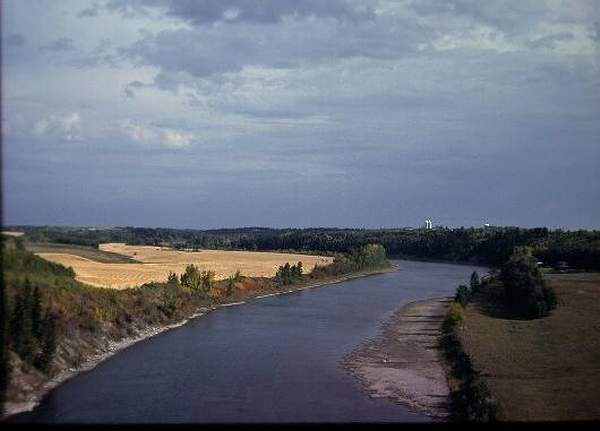 |
View from middle of the bridge looking northward
at the Red Deer River. |
| This picture was taken and submitted by Larry Buchan | |
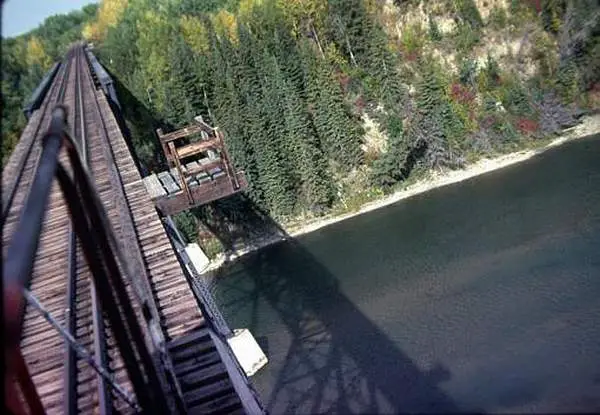 |
View looking down towards river and water barrel stand
visible ahead |
| This picture was taken and submitted by Larry Buchan | |
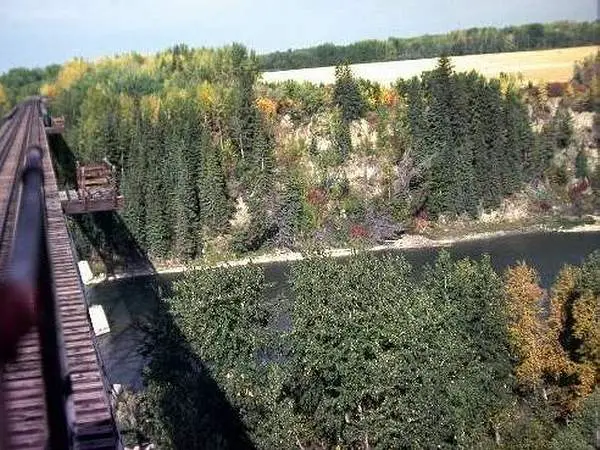 |
Another view from the bridge I understand it still
survives and the community is trying to do something with it from what I've read |
| This picture was taken and submitted by Larry Buchan | |
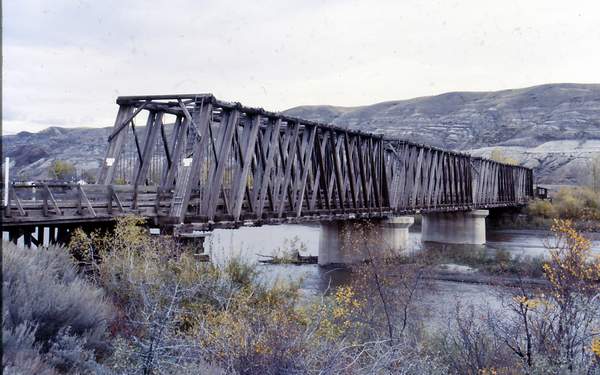 |
A 1984 photo of the old East Coulee rail bridge, which
served the (now totally restored) Atlas Coal Mine in the Alberta Badlands near Drumheller. http://www.atlascoalmine.ab.ca/ Built in 1948 likely by the CNR, the bridge is now
|
| This picture was taken and submitted by Massey F. Jones | |
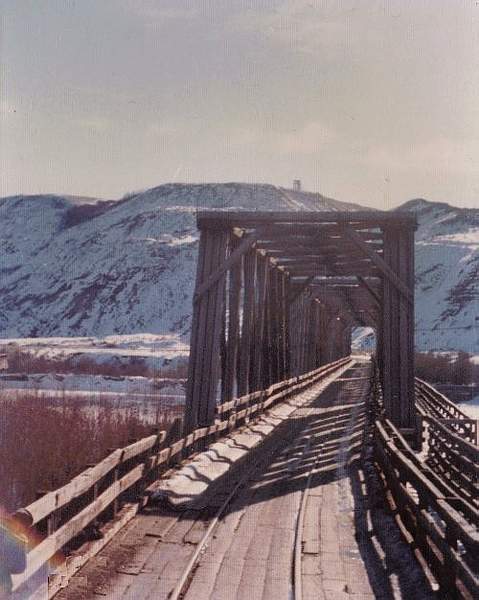 |
Wooden railway bridge over Red Deer River looking
towards yard at East Coulee, bridge tenders shanty visible on right side center 1976. |
| This picture was taken and submitted by Larry Buchan | |
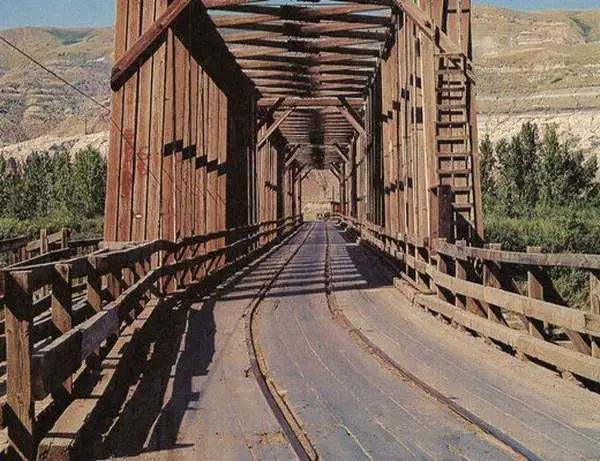 |
Wooden railway bridge over Red Deer River looking
towards yard at East Coulee, bridge tenders shanty visible on right side center 1976. |
| This picture was taken and submitted by Larry Buchan | |
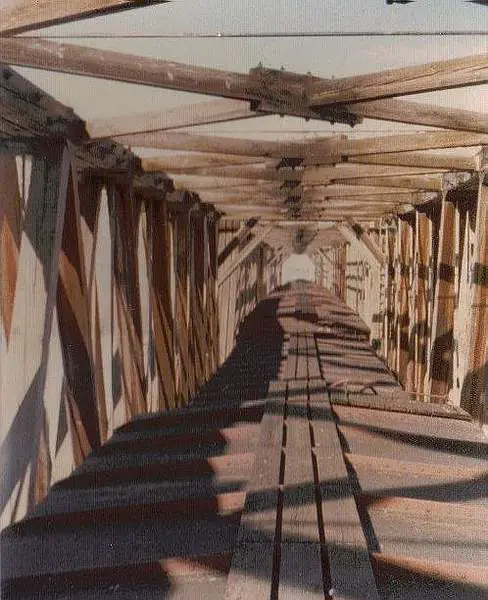 |
Looking back at the box cars I was riding while
crossing the bridge. These are old cars used for loading bulk coal, for the few customers left that were using domestic heating coal. |
| This picture was taken and submitted by Larry Buchan |
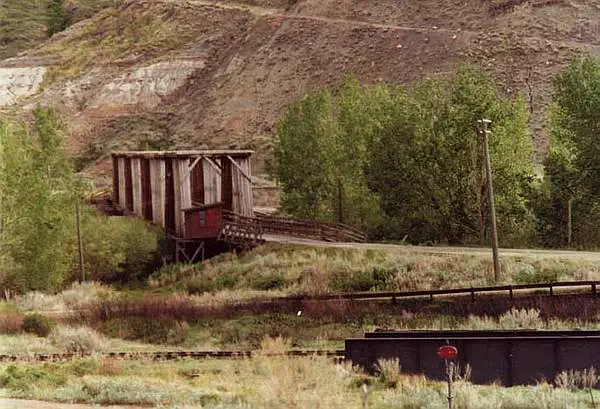 |
Wooden truss bridge over the Red Deer River in East Coulee, Alberta
The picture was taken in 1976 it shows
the turntable in the foreground, and the shanty on the approach to the bridge that controled vehicular traffic, and train movements over this dual purpose bridge. |
| This picture was taken and submitted by Larry Buchan | |
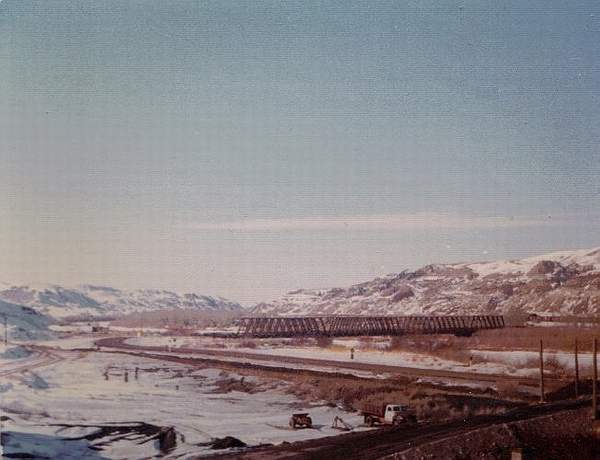 |
Winter scene of the wooden truss bridge over the
Red Deer River in East Coulee, Alberta this is taken from near the tipple after I spotted the cars at the Atlas Coal Mining Co. the last of hundreds of mines that were in the Drumheller Valley March 1974. |
| This picture was taken and submitted by Larry Buchan | |
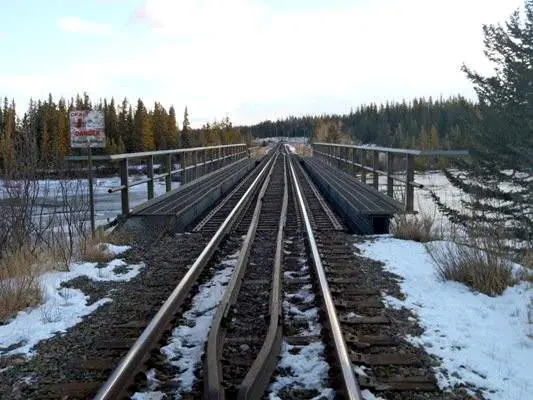 |
Mile 51.7 Laggan Subdivision railway bridge at Seebe
over Bow River location of the old Calgary Power Electric dam site looking east |
| This picture was taken and submitted by Larry Buchan | |
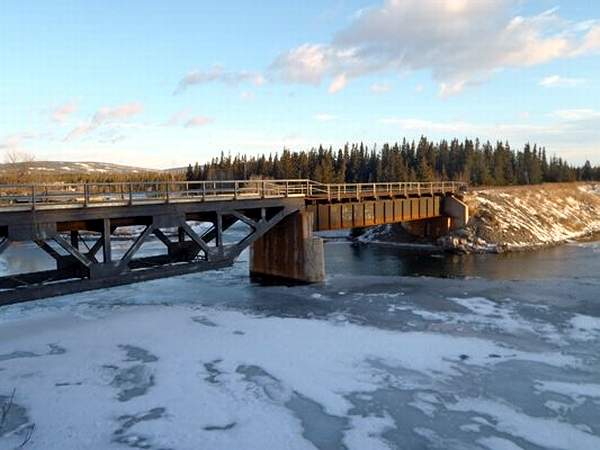 |
Mile 51.7 Laggan Subdivision railway bridge at Seebe
over Bow River looking northeast |
| This picture was taken and submitted by Larry Buchan | |
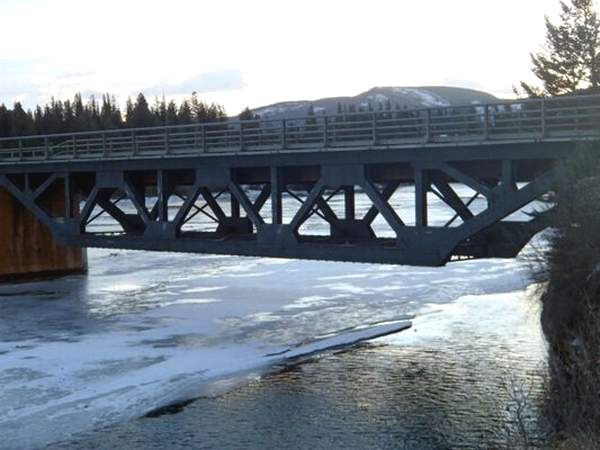 |
Mile 51.7 Laggan Subdivision railway bridge at Seebe
over Bow River west span looking south |
| This picture was taken and submitted by Larry Buchan | |
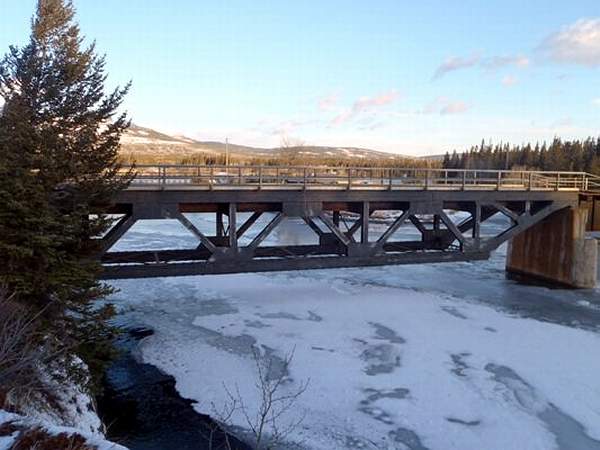 |
Mile 51.7 Laggan Subdivision railway bridge at Seebe
over Bow River west span looking north |
| This picture was taken and submitted by Larry Buchan | |
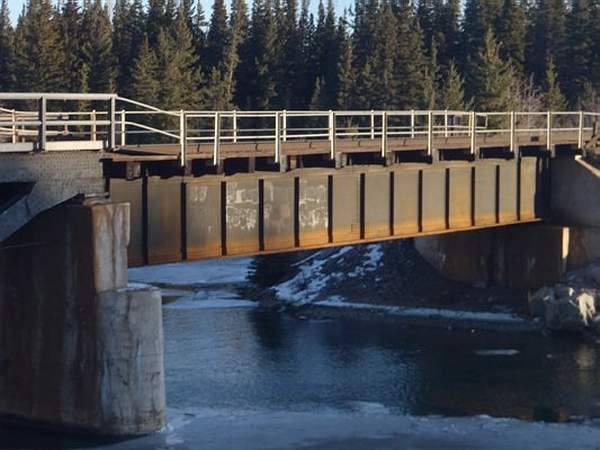 |
Mile 51.7 Laggan Subdivision railway bridge at Seebe
over Bow River east span |
| This picture was taken and submitted by Larry Buchan | |
 |
Mile 57 Laggan Subdivision railway bridge crossing
over Exshaw Creek looking north at Heart Mountain |
| This picture was taken and submitted by Larry Buchan | |
 |
Mile 57 Laggan Subdivision railway bridge looking
eastward older bridge structure on left newer bridge deck on the right mileage indicators on bridge abutments. |
| This picture was taken and submitted by Larry Buchan | |
 |
Mile 53.1 Laggan Subdivision Kananaskis railway
bridge over Bow River looking northwest. |
| This picture was taken and submitted by Larry Buchan |
 |
Mile 53.1 Laggan Subdivision Kananaskis railway
bridge over Bow River looking northeast. |
| This picture was taken and submitted by Larry Buchan | |
 |
Mile 25.7 Laggan subdivision railway bridge over
Bow River at Cochrane looking west. |
| This picture was taken and submitted by Larry Buchan | |
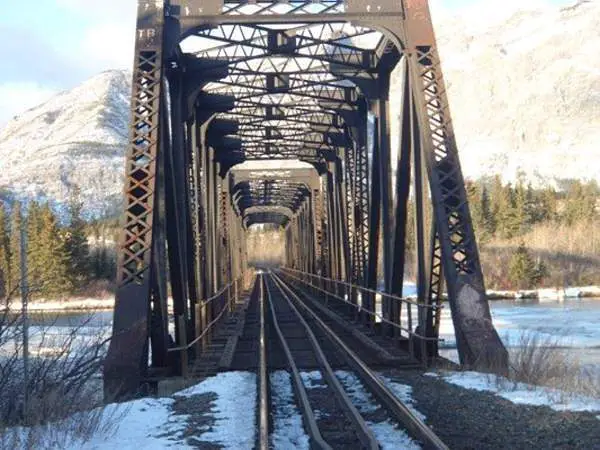 |
Mile 25.7 Laggan subdivision railway bridge over
Bow River at Cochrane looking west. |
| This picture was taken and submitted by Larry Buchan | |
 |
Mile 25.7 Laggan subdivision railway bridge over
Bow River at Cochrane looking southwest |
| This picture was taken and submitted by Larry Buchan | |
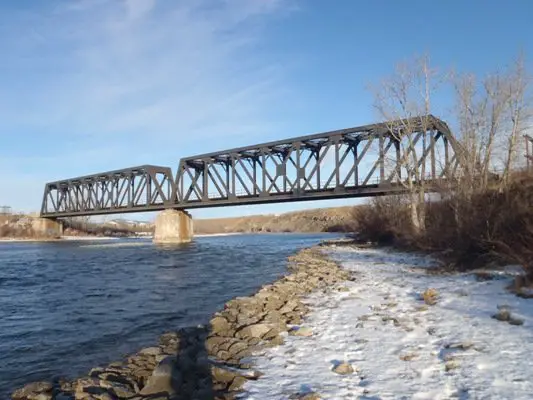 |
Mile 25.7 Laggan Subdivision railway bridge over
Bow River at Cochrane looking North-west. |
| This picture was taken and submitted by Larry Buchan | |
 |
Mile 25.7 Laggan Subdivision railway bridge over
Bow River at Cochrane with eastbound approaching. |
| This picture was taken and submitted by Larry Buchan | |
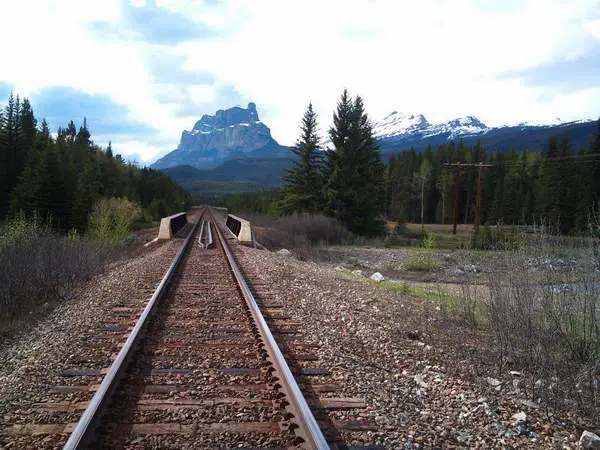 |
This bridge is located bridge found between Johnston Creek Camp site, Banff and the Bow River |
| This picture was taken and submitted by Ron Hahn | |
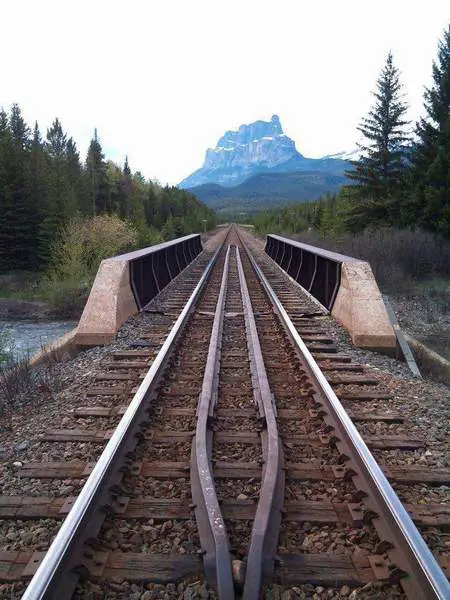 |
This bridge is located bridge between Johnston Creek
Camp site, Banff and the Bow River |
| This picture was submitted by Larry Buchan | |
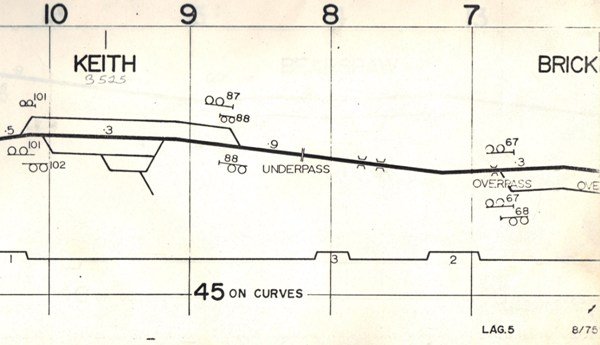 |
These twin bridges used to be on the outskirts of Northwest Calgary
near the district of Bowness, unfortunately a lot of kids used to use it
in the summer to dive off of into the river, and there were many tragic
accidents as there was a curvature on the approach in both directions,
and trains
would be operating at speeds of 45 miles an hour so the outcome would be unavoidable, in the 90s the city of Calgary even went to the trouble of building a pedestrian bridge nearby that the kids could use, but there are still too many thrill seekers loving the element of danger, and playing chicken with trains. |
| This picture was submitted by Larry Buchan | |
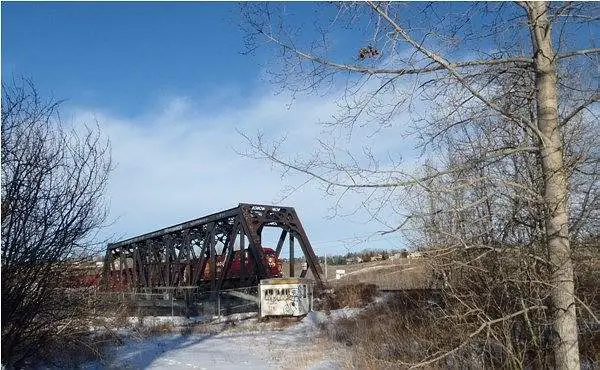 |
Here are some photos of the East span looking West
towards Keith from the South side we see an eastbound on the bridge. |
| This picture was submitted by Larry Buchan | |
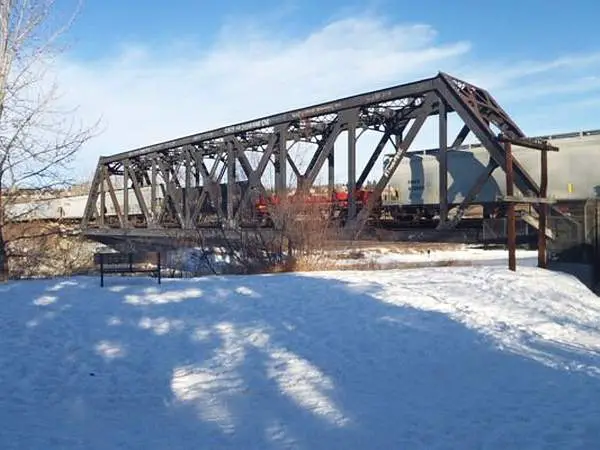 |
|
| This picture was submitted by Larry Buchan | |
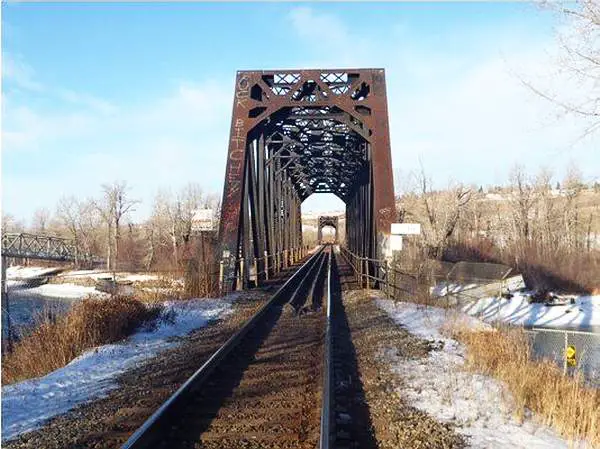 |
These pictures show the East span looking westward, the photo of
the mile board for Keith has been painted over
and reads "ith" along with a under deck view, and the center abutment. |
| This picture was submitted by Larry Buchan | |
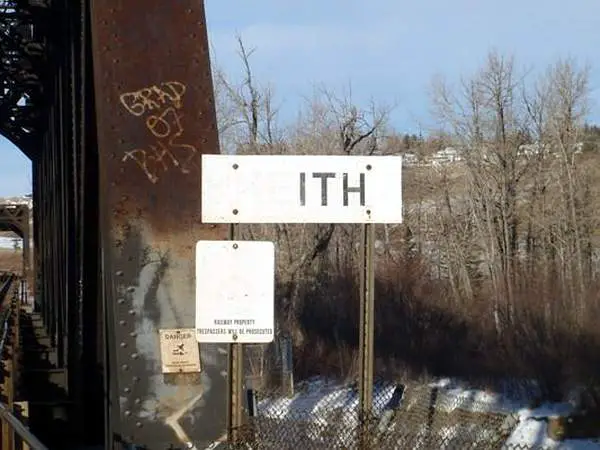 |
|
| This picture was submitted by Larry Buchan |
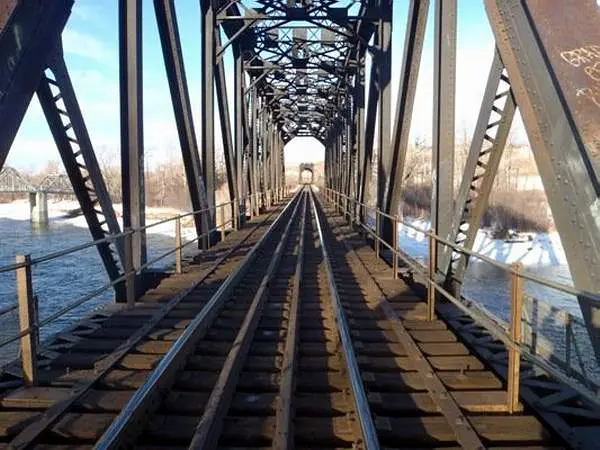 |
|
| This picture was submitted by Larry Buchan | |
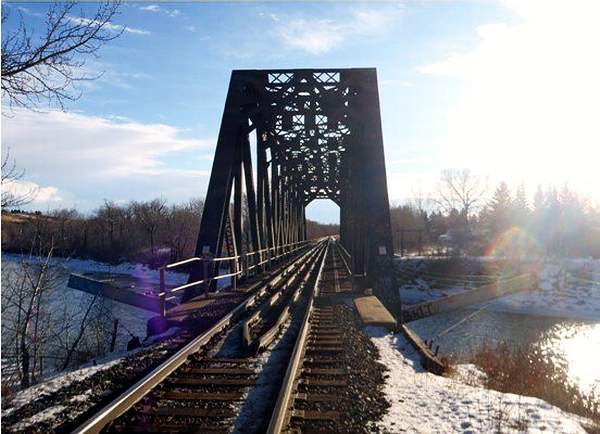 |
West span of twin bridges looking East |
| This picture was submitted by Larry Buchan | |
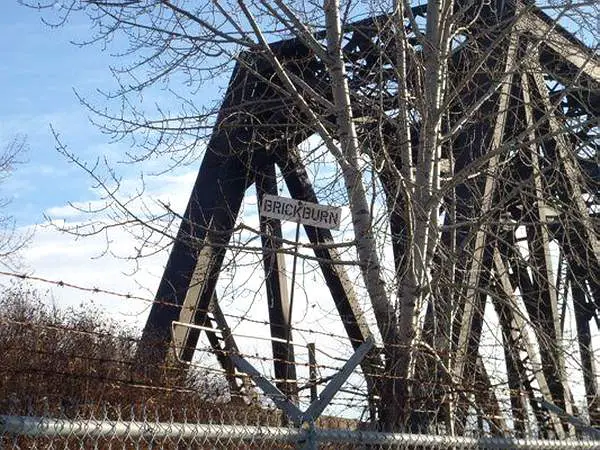 |
Here are some photos of the West span of the twin
bridges view one looking East, one showing a mileboard Brickburn siding, two views looking to the North, and some other views looking southward. |
| This picture was submitted by Larry Buchan | |
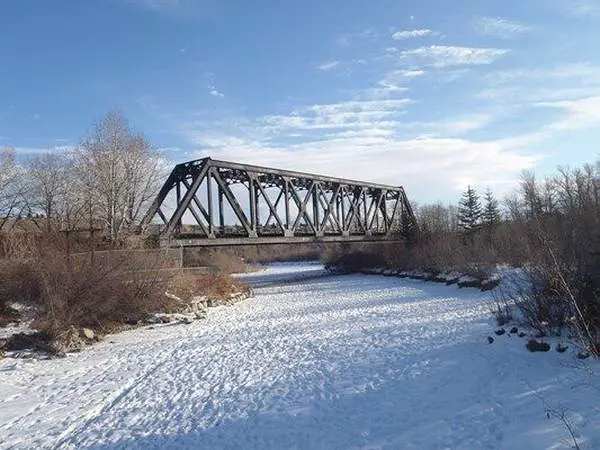 |
West span looking northward |
| This picture was submitted by Larry Buchan | |
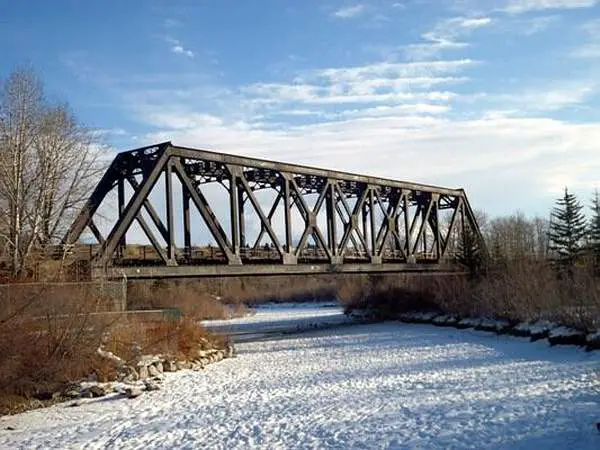 |
West span looking northward |
| This picture was submitted by Larry Buchan | |
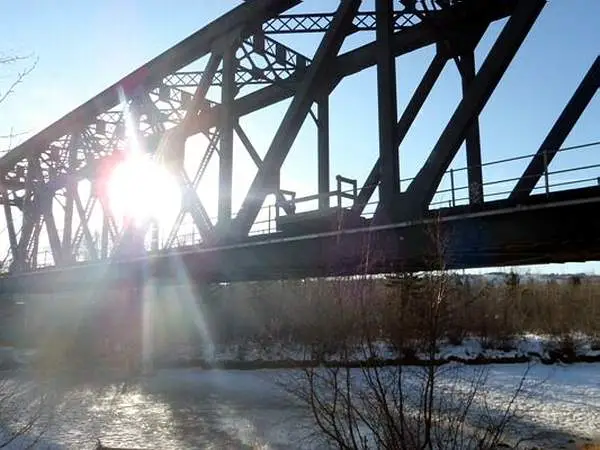 |
|
| This picture was taken and submitted by Larry Buchan | |
| The following series of pictures were taken and submitted by Larry
Buchan. They show the bridge crossing the Bow River going North to the
Red Deer Subdivision from Bengal the control point where the 12 Street
Tower interlocking operator directs traffic
for incoming and outgoing trains. |
|
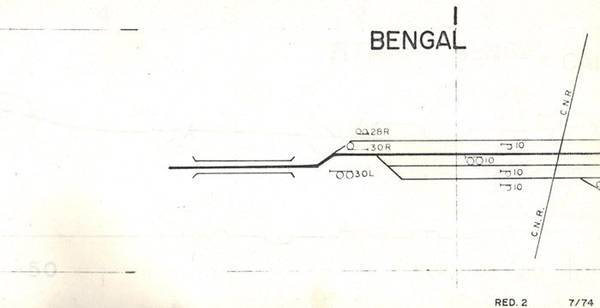 |
Track schematic of Bengal and bridge over the Bow River |
| This picture was taken and submitted by Larry Buchan | |
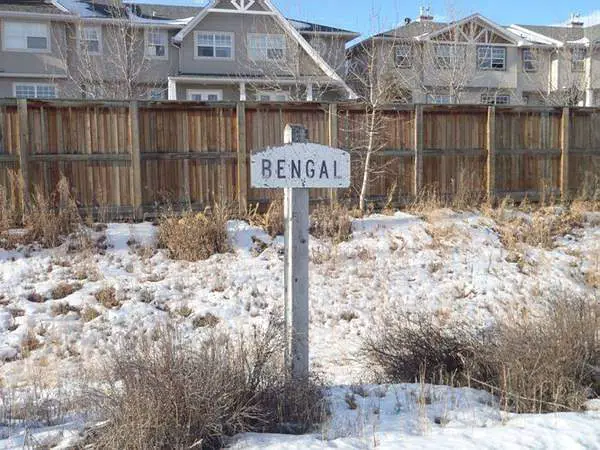 |
Bengal station board. |
| This picture was taken and submitted by Larry Buchan | |
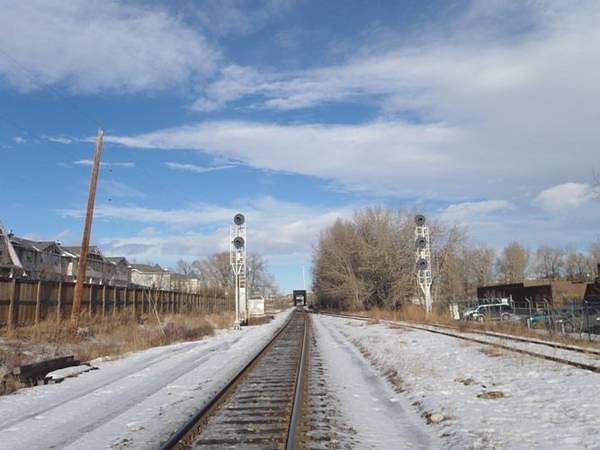 |
Interlocking signals on south bank of Bow River
At one time there were four tracks here |
| This picture was taken and submitted by Larry Buchan | |
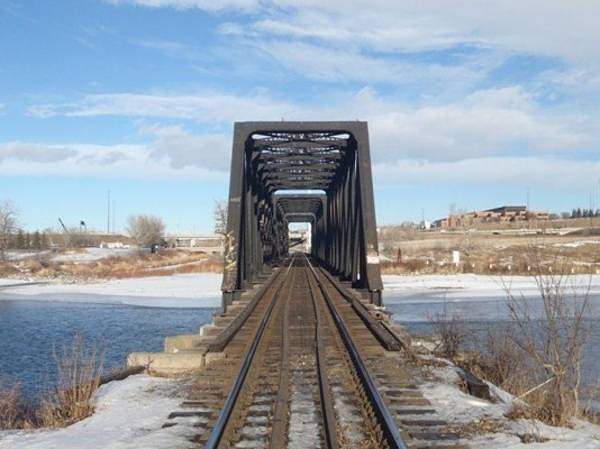 |
Views of Bow River bridge looking northward |
| This picture was taken and submitted by Larry Buchan | |
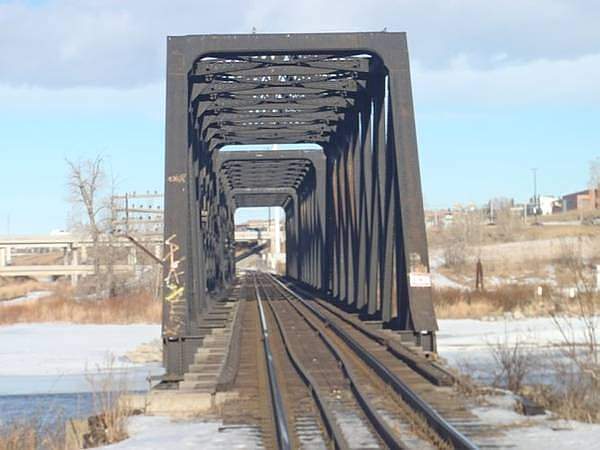 |
Views of Bow River bridge looking northward |
| This picture was taken and submitted by Larry Buchan | |
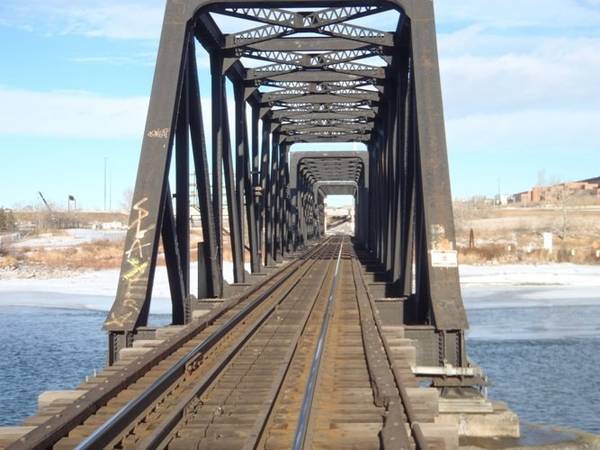 |
Views of Bow River bridge looking northward |
| This picture was taken and submitted by Larry Buchan | |
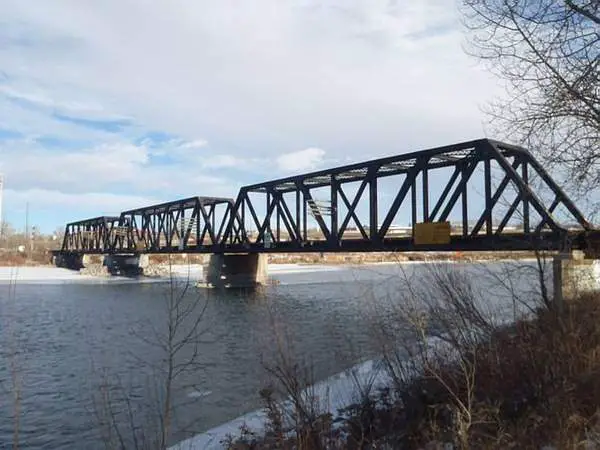 |
Looking Northwest |
| This picture was taken and submitted by Larry Buchan |
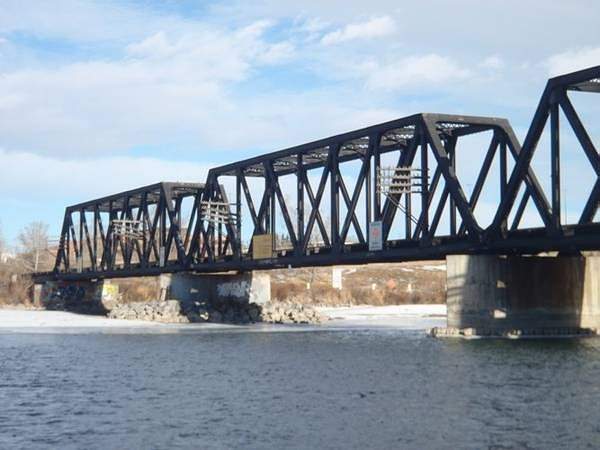 |
Looking Northwest |
| This picture was taken and submitted by Larry Buchan | |
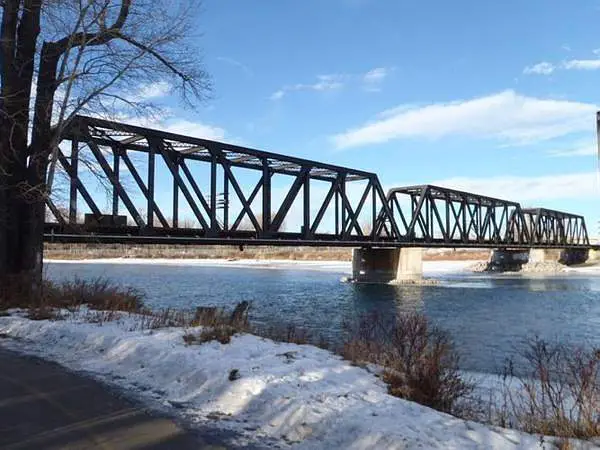 |
Looking Northeast |
| This picture was taken and submitted by Larry Buchan | |
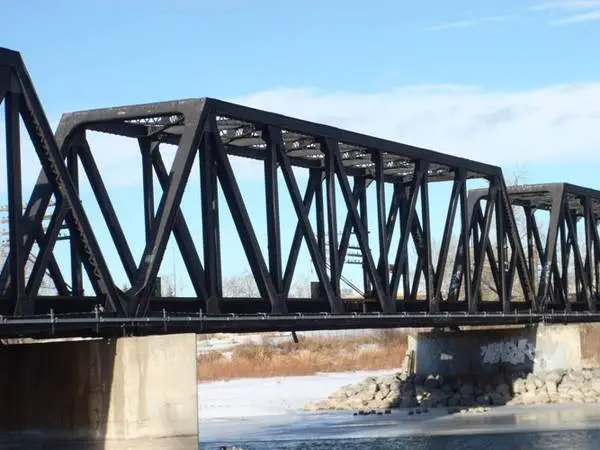 |
Looking Northeast. |
| This picture was taken and submitted by Larry Buchan | |
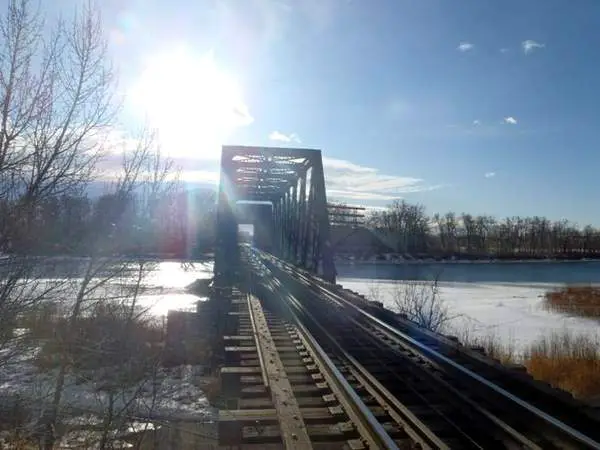 |
Bridge over Bow River from the north bank |
| This picture was taken and submitted by Larry Buchan | |
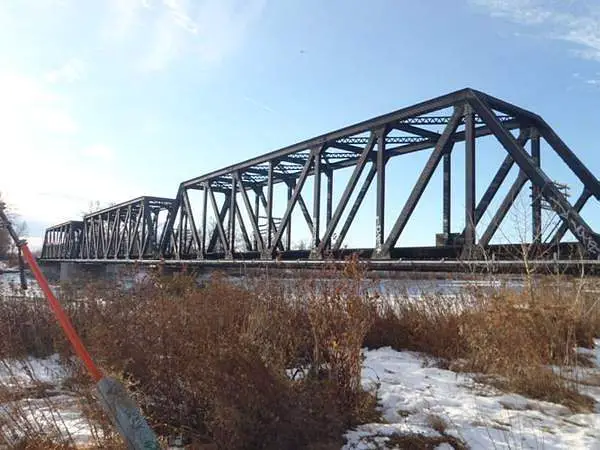 |
Bridge over Bow River looking Southwest |
| This picture was taken and submitted by Larry Buchan | |
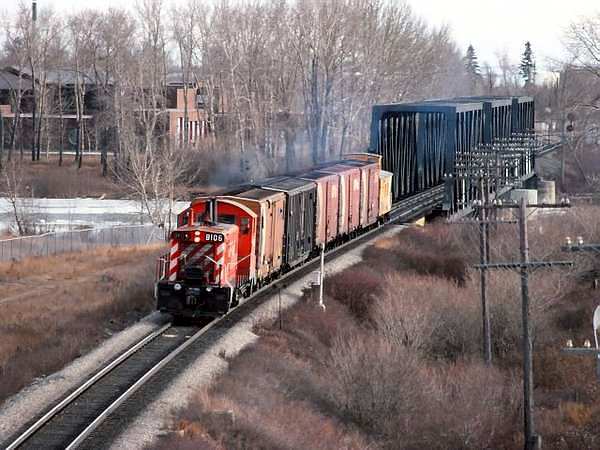 |
In this view taken during the spring in the mid-80s,
CP 8106 has just crossed the north side of the Bow River Bridge east of the Calgary downtown core, most likely originating from Alyth Yard with a load of newsprint. Near Bengal (Mile 1.1 Laggan Sub), it will switch
The locomotive is an SW1200RS, built by General
|
| This picture was taken and submitted by Massey F. Jones | |
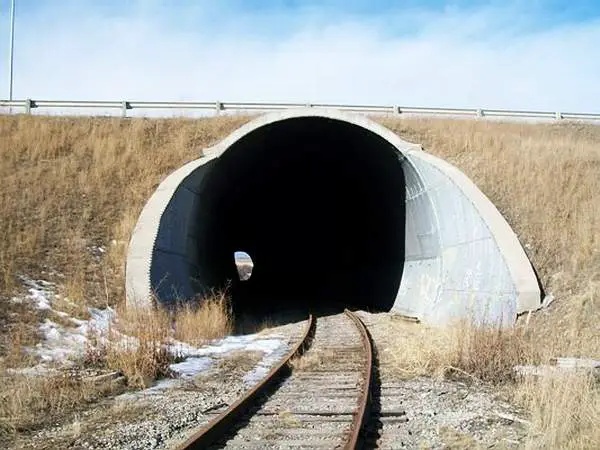 |
Meridian Yard lead that runs through tunnel under
Deerfoot Trail to service industries including the Calgary Herald, with grades of over 2.2% the steepest in the terminal, and classed as Mountain Grade. |
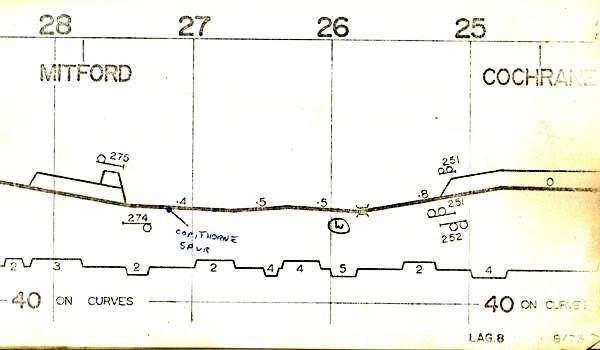 |
CPR track profile showing Cochrane and bridge at
Mile 26.8 , and Mitford 2 storage tracks for sulfur & LPG tank empties the Copithorne spur starts just East of the track signal. |
| This picture was taken and submitted by Larry Buchan | |
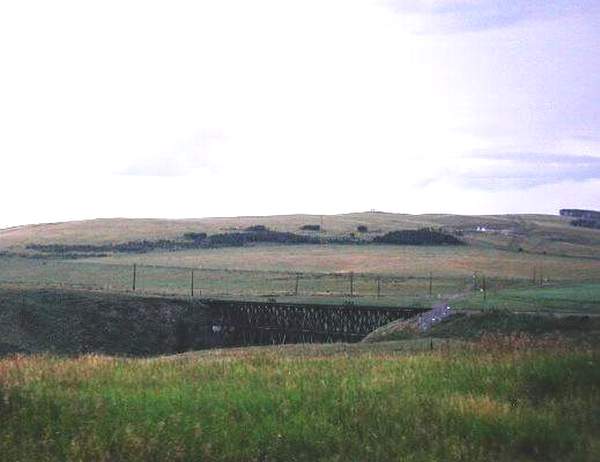 |
At mile 27.2 Of the Laggan Subdivision is the Copithorne Spur that
runs 8.94 miles, it services the Shell Oil Gas
plant at Jumping Pound approaching the plant at mile 8.01 is this wooden trestle, I took the photo in 1980, it has since been filled in with dirt and gravel. This spur had lots of grades over 2% the steepest East of the Continental divide in Alberta. We would gather up our loads of sulfur and LPG tanks,
|
| This picture was taken and submitted by Larry Buchan | |
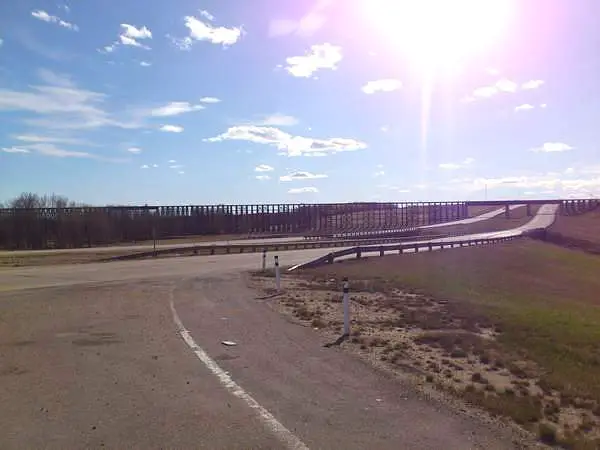 |
CNR Rochfort Trestle near Mayerthorpe, Alberta
(Google maps 53.903049,-115.020289) This is the longest wood trestle in North America CNR 2,414 ft. (736 metres) long, 110 ft. tall It was built in 1914 over Paddle River. There were two short portions replaced by steel This tressel is still in use by CN |
| This picture was taken and submitted by Ronald Hahn | |
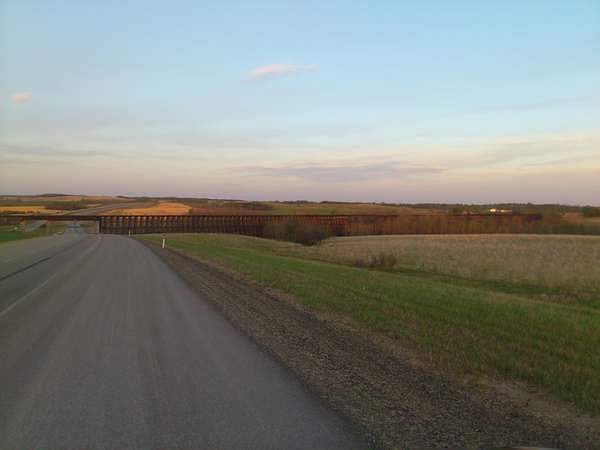 |
CNR Rochfort Trestle near Mayerthorpe, Alberta
(Google maps 53.903049,-115.020289) |
| This picture was taken and submitted by Ronald Hahn | |
| Larry put together a series of pictures of a a small railway bridge located just north of the one he sent last time that crosses the Bow River on the Red Deer Subdivision. This Location Is called "Titian" and crosses Nose Hill Creek | |
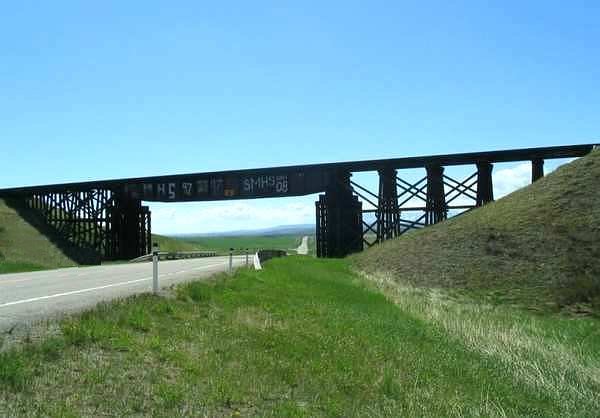 |
The Pecten Sub trestle crosses over Highway 6,
between Waterton Lakes National Park and Pincher Creek, AB. The bridge was built in the 1960s when a spur was built off the CP Crowsnest mainline at Brocket, AB for a new Shell Gas complex, about 5-10 kilometers west of the bridge. It's built with wood on each side, and a steel deck overtop the highway, with steel reinforcing the wood. The Shell is still in use today and the bridge carries CP's heaviest diesels on a regular basis, a few times every week. |
| This picture was taken and submitted by Braedan Dunne, May 21, 2013 | |
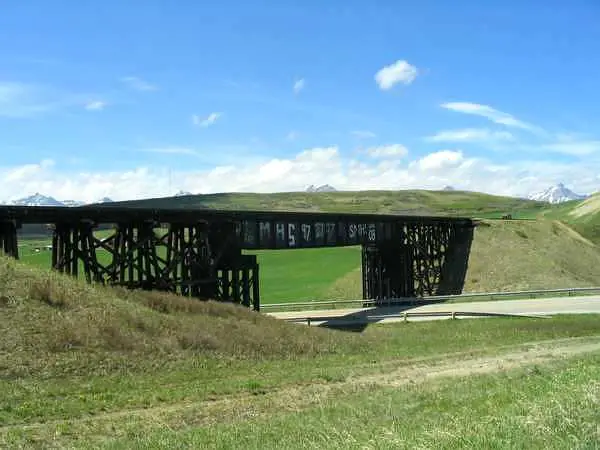 |
The Pecten Sub trestle |
| This picture was taken and submitted by Braedan Dunne | |
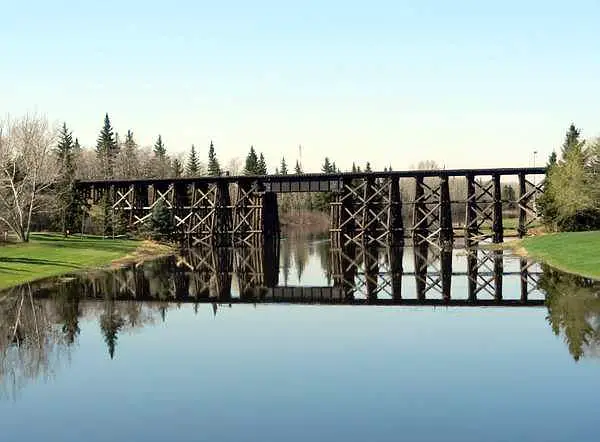 |
St. Albert was built for the CNR in 1906 and is still
in use as of Jan 2015 |
| his picture was taken and submitted by Dale Redekopp, St. Albert, AB | |
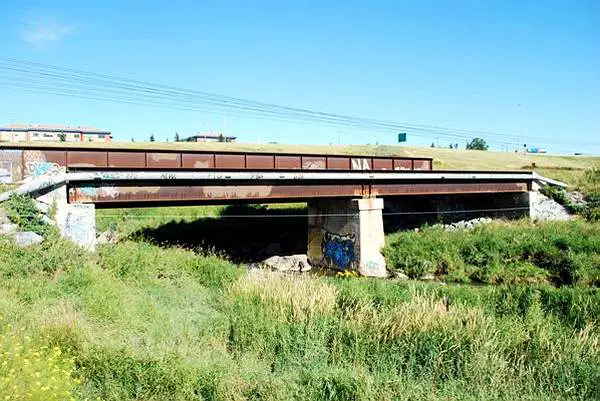 |
Double bridge crossing Nose Hill Creek, original span
in foreground, and second bridge deck added in the early 2000's this view is looking eastward towards Deerfoot Trail. |
| This picture was taken and submitted by Larry Buchan | |
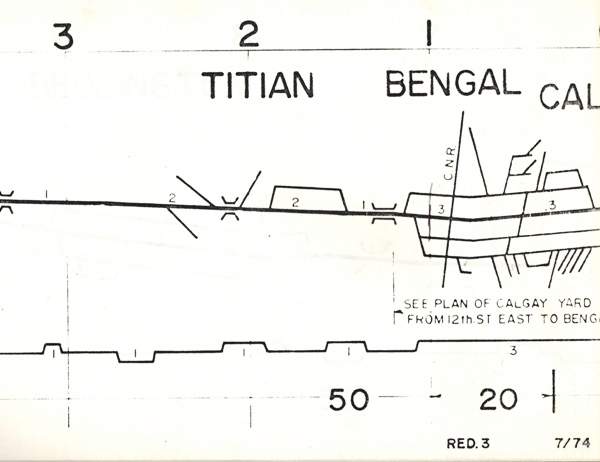 |
CPR track profile from 197 showing Titian storage
siding and bridge over Nose Creek, I have some more pictures of the wooden trestle further north on the Red Deer Subdivision about mileage 50, and some other wooden trestles over the CPR Western Irrigation District South of Alyth yard. |
| This picture was taken and submitted by Larry Buchan | |
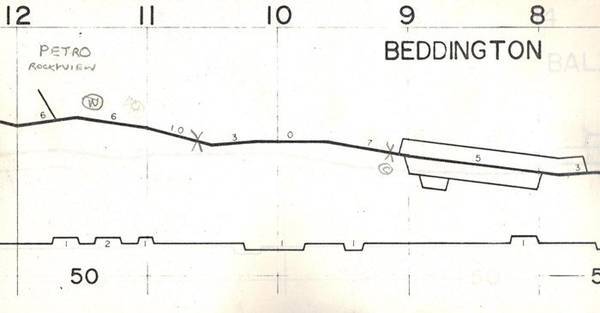 |
A wooden trestle over Nose Creek on the Red Deer Subdivision
Petro at mile 11.7 is where the Rockyview Spur leaves
|
| This picture was taken and submitted by Larry Buchan | |
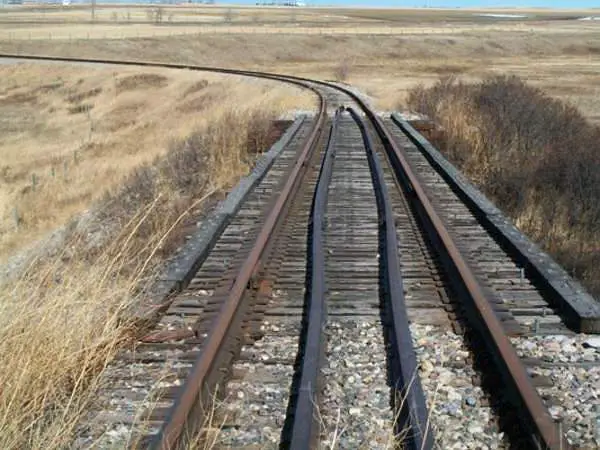 |
CPR track profile showing Petro at mile 11.7
Red Deer Sub about 3 miles north of the old Beddington Siding |
| This picture was taken and submitted by Larry Buchan | |
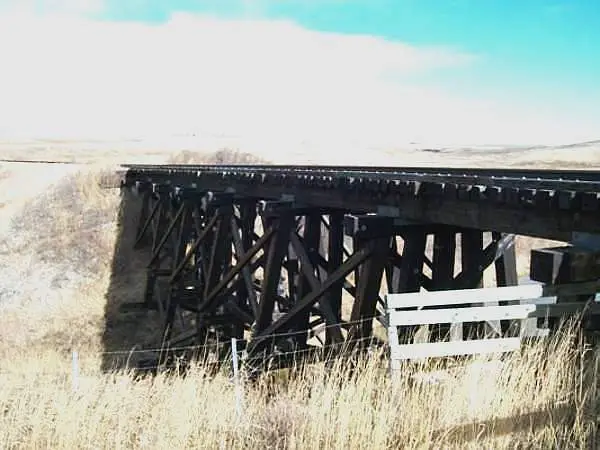 |
Wooden Trestle bridge deck looking East |
| This picture was taken and submitted by Larry Buchan | |
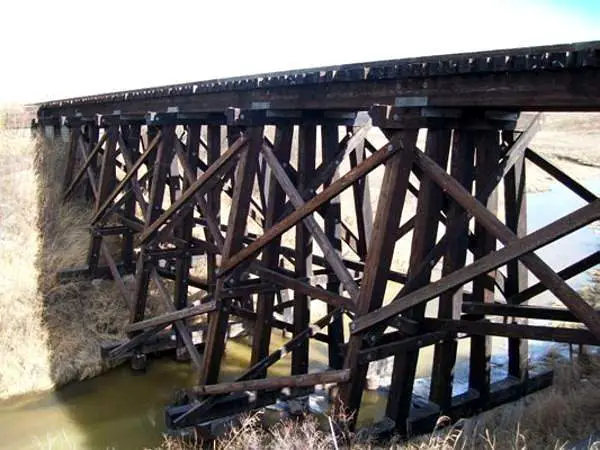 |
View looking Southeast |
| This picture was taken and submitted by Larry Buchan | |
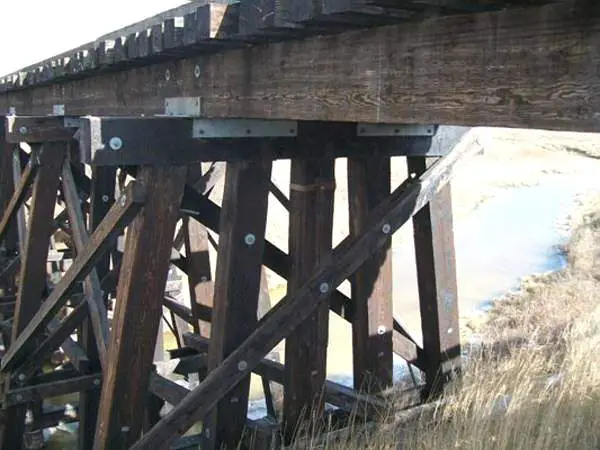 |
View showing Nose Creek meandering southward |
| This picture was taken and submitted by Larry Buchan | |
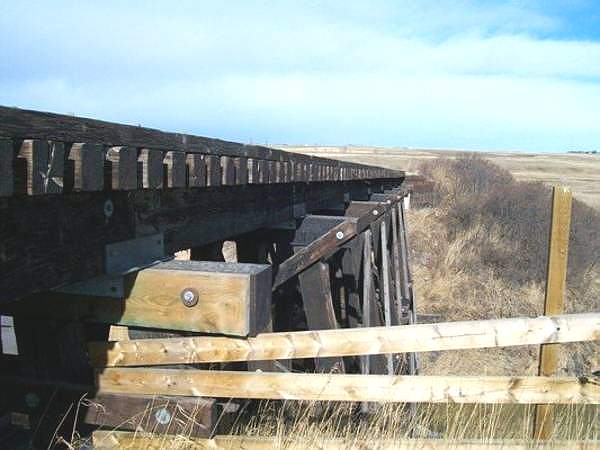 |
View showing Nose Creek meandering southward. |
| This picture was taken and submitted by Larry Buchan | |
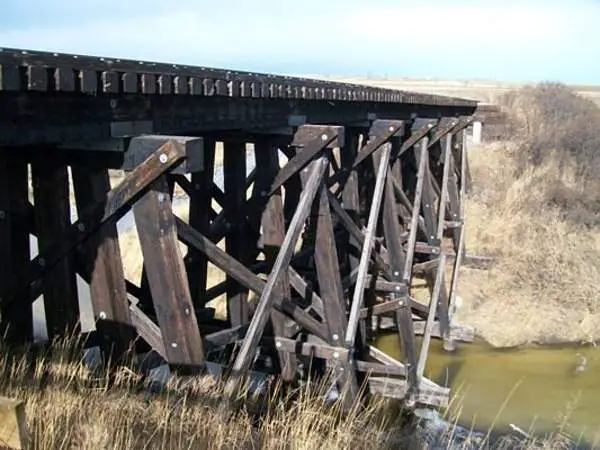 |
View looking Northeast |
| This picture was taken and submitted by Larry Buchan | |
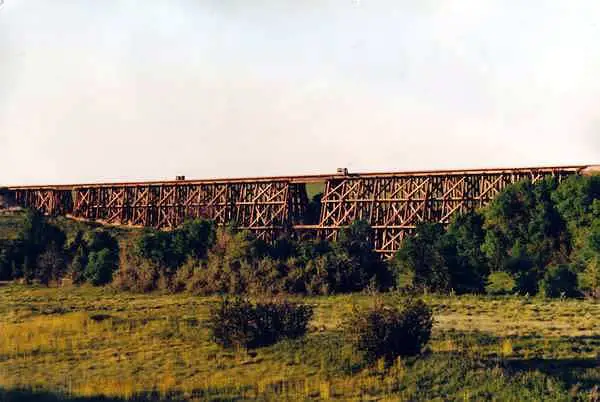 |
Research seems to indicate that this is the
Briggs Trestle, a rare timber bridge and one of the last ones in the region. It is located northwest of Red Deer and spans a ravine near the Blindman River near the vanished village of Briggs, just southwest of Blackfalds AB. Estimated to be 570 to 590 feet long (about 200
D. Grant Watson has property that is as close as one can get to this
bridge and he has made off to any rail fan that wanted to photograph this
trestle to make an appointment with him to do so via email at:
|
| Photo: Lorne Unwin - Massey F. Jones collection | |
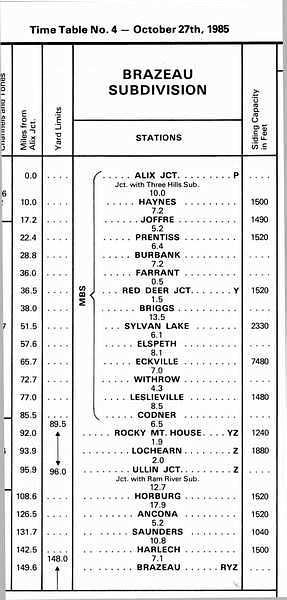 |
The CN Brazeau Sub.
Briggs is at Mile 38.0 between Alix Jct and Brazeau. A footnote in the Time Table indicates that movements
|
| Submitted by Massey F. Jones | |
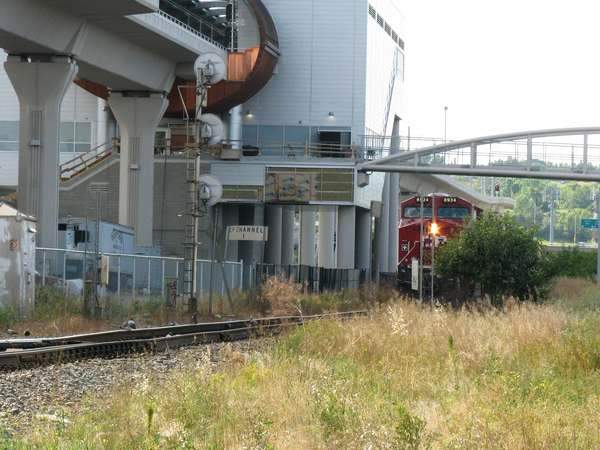 |
Close-up of the LRT station end of the footbridge.
connecting the Calgary Transit SUNALTA to the main Greyhound bus depot, at the western end of downtown Calgary. Several photo angles will become possible. |
| This picture was taken and submitted by Massey F. Jones | |
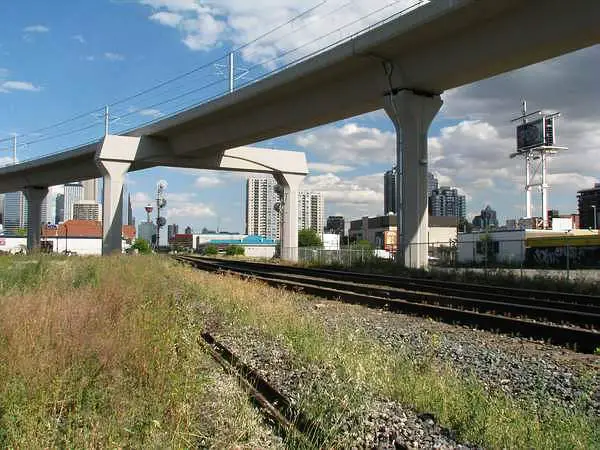 |
The LRT guideway into Calgary Transit SUNALTA LRT station connecting
to downtown.
View an animation of the West LRT line at: http://www.westlrt.ca/contentabout/route_animation.cfm Notice the Calgary Tower in the background. The site is fully accessible from 9 Avenue SW. |
| This picture was taken and submitted by Massey F. Jones | |
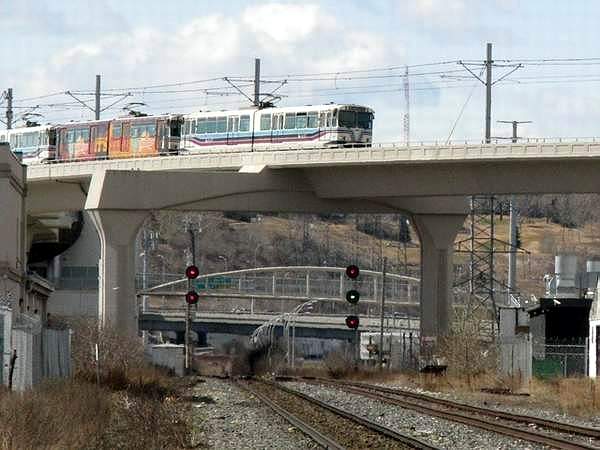 |
The LRT consists has just come out of SUNALTA LRT station and now
passes the CPR mainline, with the green signal indicating that a westbound
consist is about to
proceed under. The arched bridge in the background beyond the signals, is a pedestrian bridge linking the Calgary Transit SUNALTA LRT to the Greyhound bus depot. Standing on the bridge makes it possible to get an overhead view of the track with the Calgary Tower in the background. A very small part of the LRT station can be seen left centre, just under the bridge. See the view that can taken from it elsewhere on this page. This slight telephoto view, taken from the corner of 11 St SW and 9 Ave at the edge of the downtown core (Mi. 1.1 Laggan Sub), looks west on May 20, 2014. Morning is the best time to photograph this overpass in full sun. Prior to 9:00 am, will see traffic about every 5 minutes on the LRT bridge and it is about the time when eastbound CP freights also arrive in Calgary. |
| This picture was taken and submitted by Massey F. Jones | |
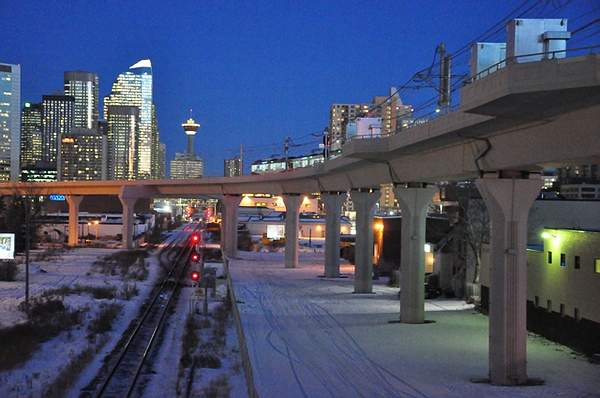 |
The brand new pedestrian overpass at Calgary Transit's SUNALTA LRT
station offers a fairly spectacular view
of CPR Laggan Sub below (about Milepost 1.2), by just stepping outside the LRT station door and taking a dozen steps. This view looks east towards downtown. The Greyhound station is at the other end of the pedestrian overpass. Looking west is more plain, with a long stretch of track ending by a curve to the right. . |
| This picture was taken and submitted by Massey F. Jones | |
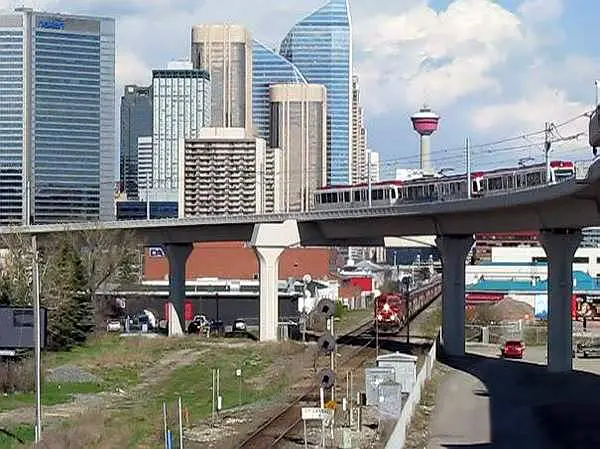 |
Frequent westbound CPR consists pass under the
Calgary Transit overpass at SUNALTA, just west of downtown and the pedestrian bridge from which this view was taken, mere steps from the station front door. Two more mile-long CP consists followed in rapid succession within 30-minutes of this view around 5:00 pm May 23rd, 2014. In the background, the Calgary Tower and CP
|
| This picture was taken and submitted by Massey F. Jones | |
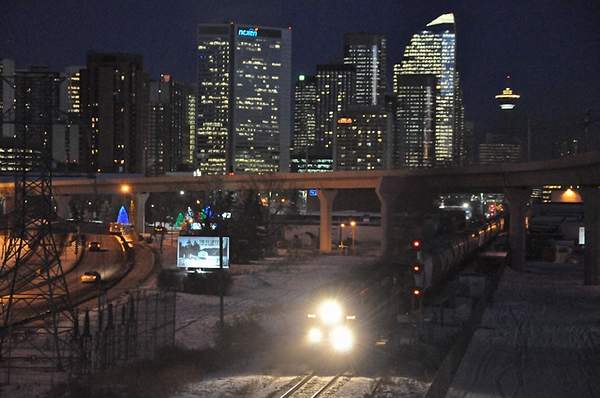 |
CPR 9807 West passes under the newly-opened
SUNALTA LRT station just west of downtown, just after dark; on January 2nd, 2013. In the background, the Calgary Tower and CP Corporate HQ on 9th Avenue SW, with CPR locomotive #29 on display in front of their building. (See the CPR page: http://yourrailwaypictures.com/CPRsteamengines/). If you have some time to spare between Greyhound buses, the overpass links the bus terminal with the LRT station. |
| This picture was taken and submitted by Massey F. Jones |
| Privacy Policy for http://yourrailwaypictures.com/
If you require any more information or have any questions about our privacy policy, please feel free to contact us by us by email at john@summervillens.ca At http://yourrailwaypictures.com/, the privacy of our visitors is of extreme importance to us. This privacy policy document outlines the types of personal information is received and collected by http://yourrailwaypictures.com/ and how it is used. Log Files
Cookies and Web Beacons
DoubleClick DART Cookie
Some of our advertising partners may use cookies and web beacons on
our site. Our advertising partners include ....
These third-party ad servers or ad networks use technology to the advertisements and links that appear on http://yourrailwaypictures.com/ send directly to your browsers. They automatically receive your IP address when this occurs. Other technologies ( such as cookies, JavaScript, or Web Beacons ) may also be used by the third-party ad networks to measure the effectiveness of their advertisements and / or to personalize the advertising content that you see. http://yourrailwaypictures.com/ has no access to or control over these cookies that are used by third-party advertisers. You should consult the respective privacy policies of these third-party ad servers for more detailed information on their practices as well as for instructions about how to opt-out of certain practices. http://yourrailwaypictures.com/'s privacy policy does not apply to, and we cannot control the activities of, such other advertisers or web sites. If you wish to disable cookies, you may do so through your individual browser options. More detailed information about cookie management with specific web browsers can be found at the browsers' respective websites. |